There are numerous different types of foods. And they all play a crucial function in providing people with nourishing substances to maintain human lives. But can you name specific types of them? If not, let me walk you through these food types.
The majority of them are too familiar to your daily lives, but I also include some food varieties that might be strange to many of you.
And in this article, I will cover 7 food categories with many separate sub-classes, each covering all different foods with their starting letter from a to z. So follow me to learn more about various types of food with many fascinating facts.
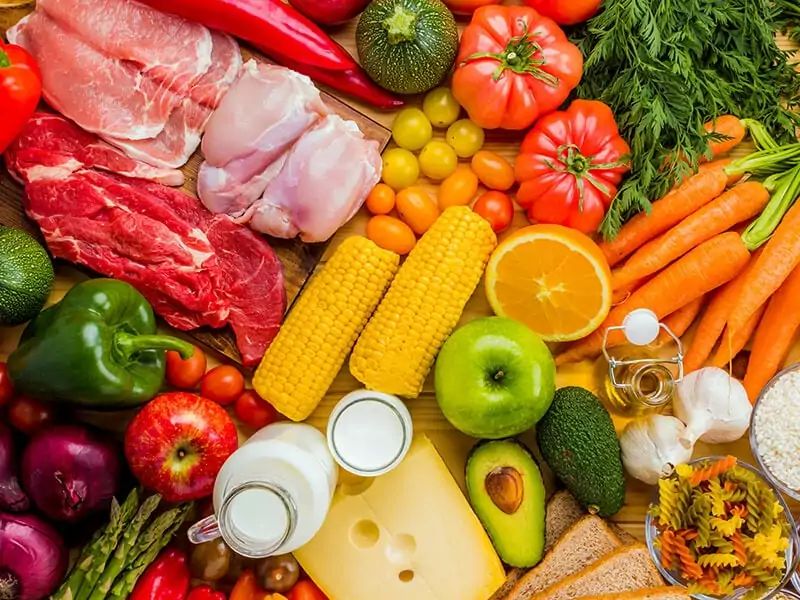
Fruits
Fruit is the general term to refer to fleshy products from trees or plants. People normally consume ripe fruits as a natural source of vitamins and minerals. But not all fruits are the same.
There are 8 popular fruit types to describe distinctive characteristics, namely Drupe (or Stone), Pome, Berries, Citrus, Multiple, Aggregate, Melons, and Nut and seeds.
1. Drupe/Stone
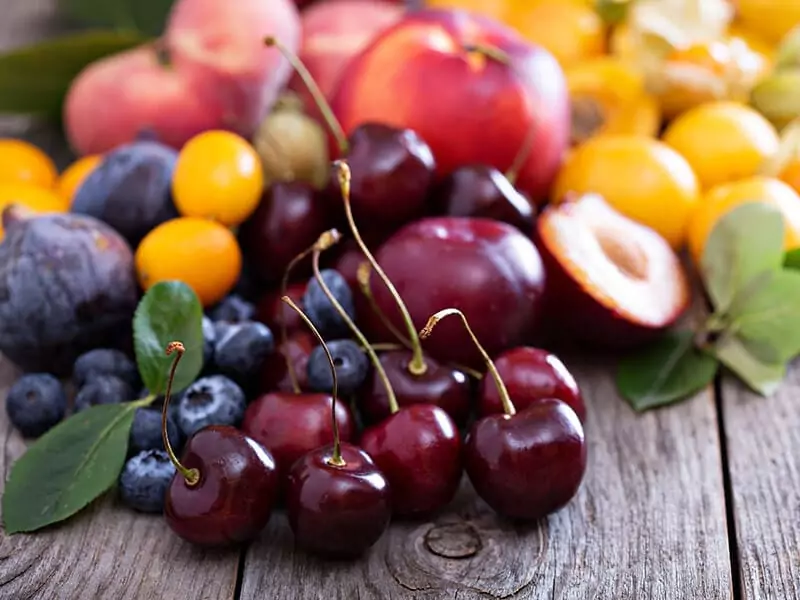
Drupe fruits come with a single seed (or pit) with a hard covering in the center covered by fleshy pulp. They normally grow from a single flower or ovary. Some examples of drupe/stone fruits are peach, cherry, apricot, nectarine, mango, olive, and many types of palm.
However, other fruits also have a stone inside and are surrounded by juicy flesh. Still, they are not drupe type, such as many avocado kinds. In reality, avocado is actually a berry fruit. And I will explain more about it in the berry part.
Interestingly, coconut is a type of drupe fruit. This fruit is a fibrous one-seed dry drupe with inner flesh and seed with a hard shell. Overall, drupe/stone fruits are good friends for your heart, immune system, eyes, skin, gut, etc.
What makes cherries drupe fruit? This presentation is the answer you might need.
2. Pome
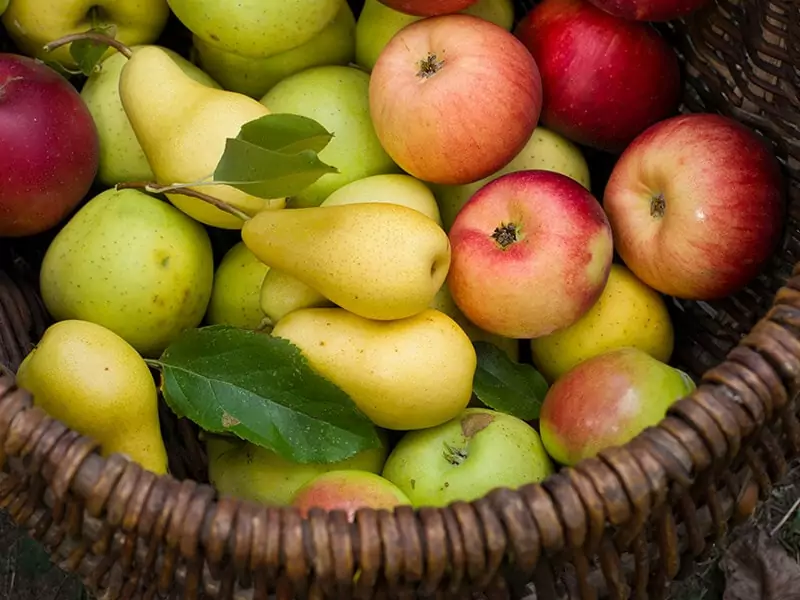
What is pome fruit? They are produced by flowering plants in the Rosaceae family. Pome fruits have a fleshy inner surrounding the core. They do not have a central pit like drupe fruits, but they have a few small seeds in the middle of the fruit.
The most common pome fruits are abundant types of apples, pears, and quince. Moreover, the term “pome” derives from the Old French word, which means “apple”, implying apple or apple-shaped items.
Many pome fruits are good on their own to enjoy fresh. However, many pome fruits are high in pectin, making them perfect for making jellies, jams, vinegar, and alcoholic drinks, for example, quinces.
3. Berries
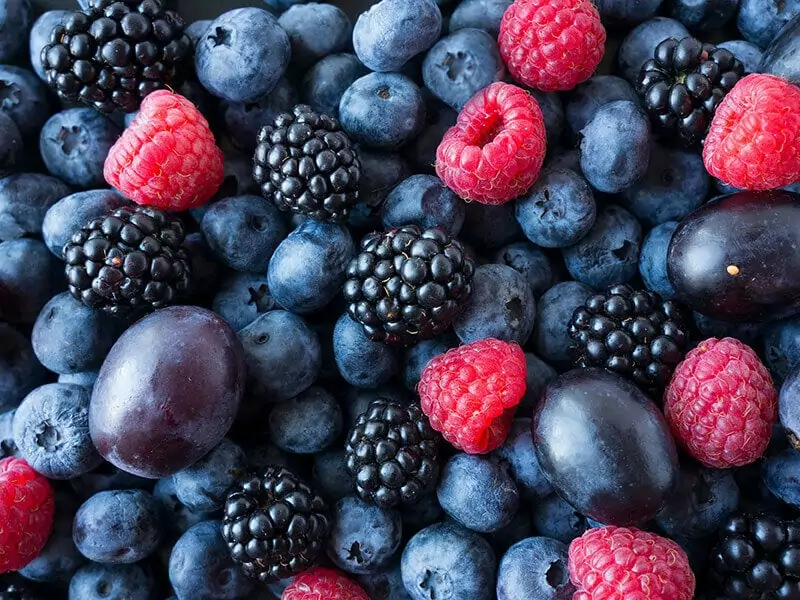
Berry fruits normally come in small-sized shapes with bright (or dark) colors. They might have many tiny seeds, but all of them are stoneless. Their flavor range is wide, which can be sweet, tart, or sour.
Other characteristics of berries are pulpy and juicy flesh that sometimes makes them mistaken for drupe fruit. Besides, please remember that not all berries are edible. Some widely-used berries for human consumption are many grape variations, blueberries, gooseberries, bilberries, etc.
Some types are edible when ripe and poisonous when immature, like elderberry, white and red mulberry. Fun fact: chili peppers, tomatoes, bananas, and kiwi are also berry fruits.
The healthy benefits of berries are impressive as they are one of the most nutritious fruits. All edible berries are rich in antioxidants and other nutrients like vitamin C, K, folate, copper, etc. Besides using fresh, people use them to prepare baked goods, jams, or preserved foods.
What fruits are berries and what are not? Click here to grasp more insights.
4. Aggregate Fruits
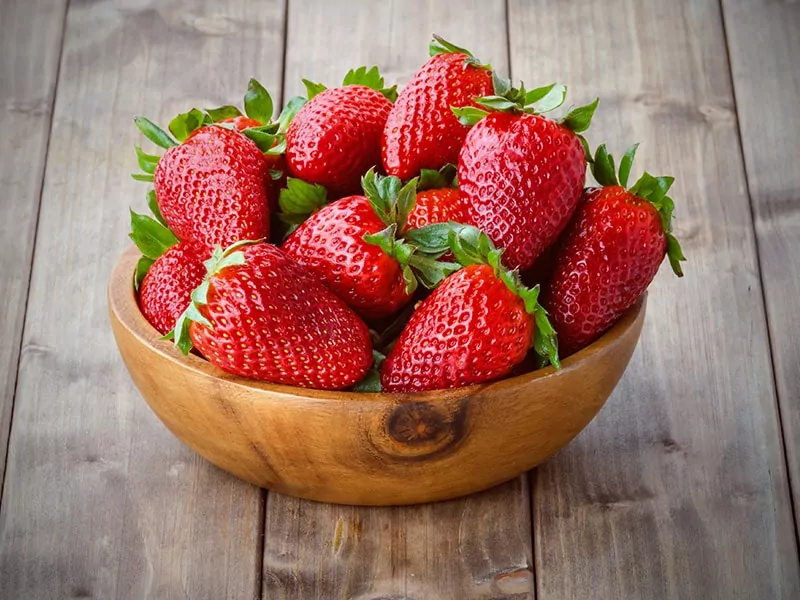
Though raspberries or strawberries have “berries” in their names, they are not berry fruits. Instead, these are aggregate fruits from multiple ovaries (carpels) in the same flower. They have 4 minor groups in aggregate fruits: drupelets, achenes, follicles, and samaras.
Drupelets and achenes are 2 more popular ones with raspberry – a type of drupelet containing many small drupes in the flesh, while strawberry and their many species – are an achene fruit featuring a small, dry, and 1-seeded fruit.
Another thing to note about this type is that not all flowers with many ovaries can produce aggregate fruits, as some ovaries cannot stick together to form a fruit. Other common examples of aggregate fruits are custard apples and soursop.
5. Multiple Fruits
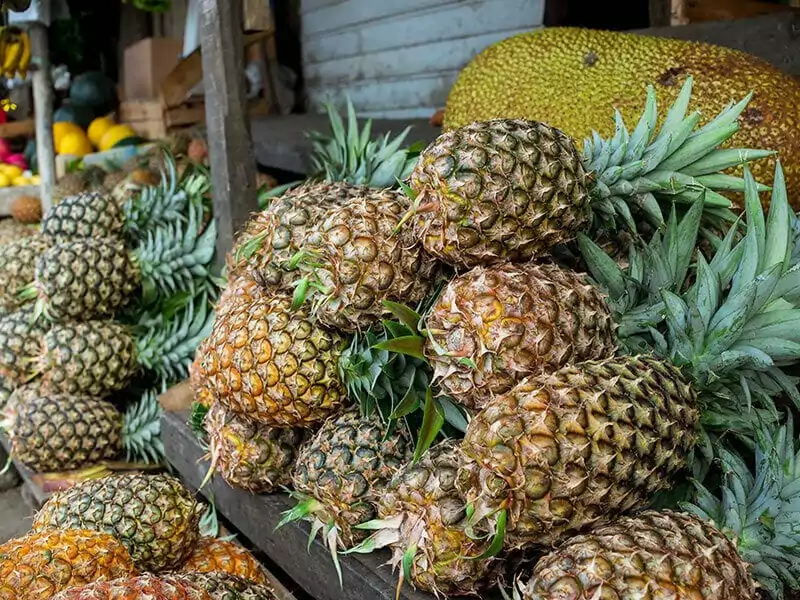
The main difference between this fruit type and aggregate fruits is that multiple fruits can grow from numerous single flowers, while aggregate fruits develop from many ovaries in 1 single flower. In botany terms, various fruits are produced from all flowers in an inflorescence.
Numerous pineapple types, mulberry, jackfruit, and fig are good examples of this type. And similar to other fruit types, multiple fruits have various benefits for improving your health.
6. Melons
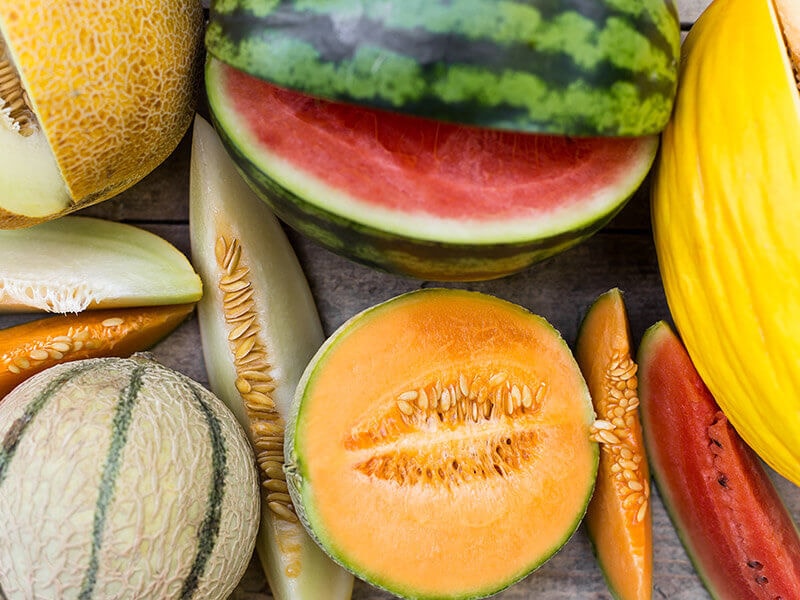
There are various types of melons, but they represent fruits with a hard, thick rind and soft flesh. The most common ones are watermelons, honeydew, and cantaloupe.
Originating in Africa, melon has a very long history and is closely linked to ancient Egyptians. Around 1359 to 1120 BC, they were brought to Europe, where early European settlers grew honeydew in the 1600s.
Nowadays, China, India, Turkey, and Iran are big countries that cultivate melons. As a whole, melons are the perfect fruits for hot summer, thanks to their sweet and juicy fleshes. But their specific flavors are varied based on melon cultivars.
7. Citrus
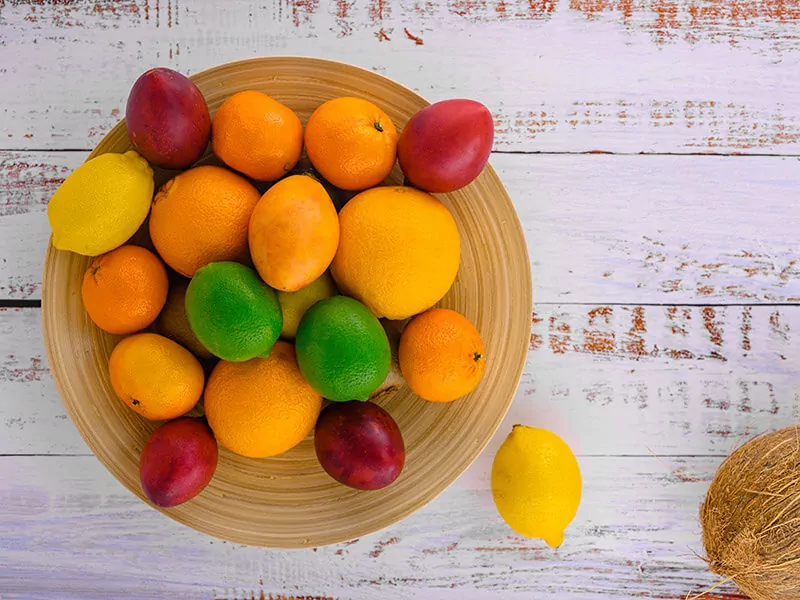
Many citrus fruit types like orange, limes, lemons, pomelos, mandarins, and grapefruits are native to tropical Asia and some parts near Oceania. And these fruits are famous for their high water content (which occupy around 88%).
They can be large or small with typical elongated shapes. Their rind is firm, covering the fleshy pulp. Most citrus fruits have elegant fragrances, thanks to the flavonoid and limonoids in the rind. Their flesh (or juice) has a high level of citric acid, creating a sharp, sweet, or sour flavor.
Vitamin C in these citrus fruits is also notable. People usually consume them fresh (like tangerines, oranges, or grapefruit), while limes or lemons are better for making juice or beverages. They can be an ideal ingredient in making jam, marmalades, and pickles.
How many citrus fruits have you tried? And what are the best ones?
8. Nuts And Seeds
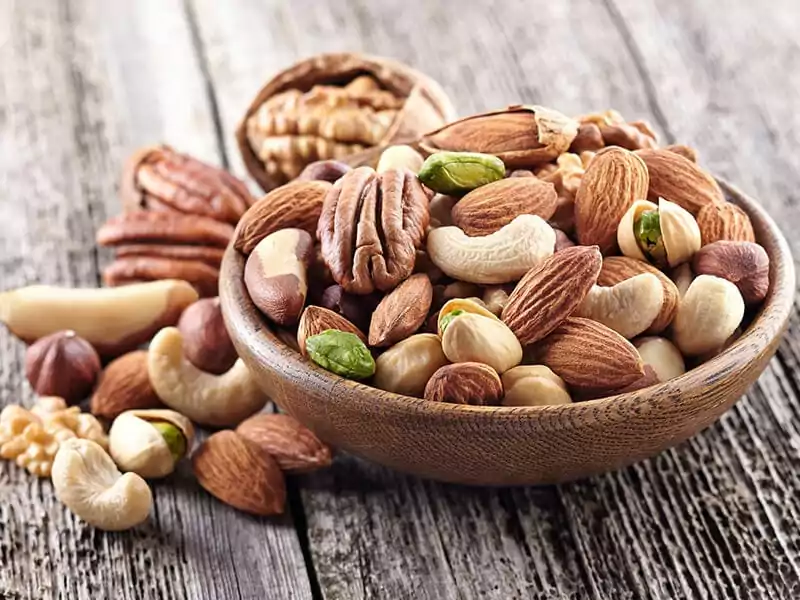
In botany, nuts are a type of fruit that come in hard shells, and these outer will not open naturally. However, many people refer to dry seeds as nuts in culinary terms, but the truth is not all seeds are nuts.
Seeds are edible parts covered by the shell, but unlike nuts, seeds can naturally open themselves for their outer shell (except for acorns, chestnuts, or hazelnuts).
And another surprising fact is that peanuts, which have a “nut” in their names, are not a true nut. They are legumes in the fruit category. Generally, what makes nuts and seeds become foods? Their nutrition levels like protein, minerals, vitamins, fiber, and healthy fats are high.
In the culinary world, nuts varieties are several, but some are not nuts in botanical terms, such as almonds, cashew, chestnut, hazelnut, pistachios, and more. If you like to enjoy seeds, pumpkin seeds, sunflower seeds, chia seeds, and sesame seeds are well-loved ones.
What nuts should you eat and should not? This demonstration is the answer.
Vegetables
Vegetables are one of the significant food on the human dining table. They are parts of plants that you can enjoy raw, cook, or make juice with them. However, vegetables include a wide array of varieties; it would be better to learn more about them in 8 sub-classes.
These categories of vegetables are bulb, fungi, root, stem, flower, tuber, fruit vegetable, and legume. Read on to find out more!
9. Roots
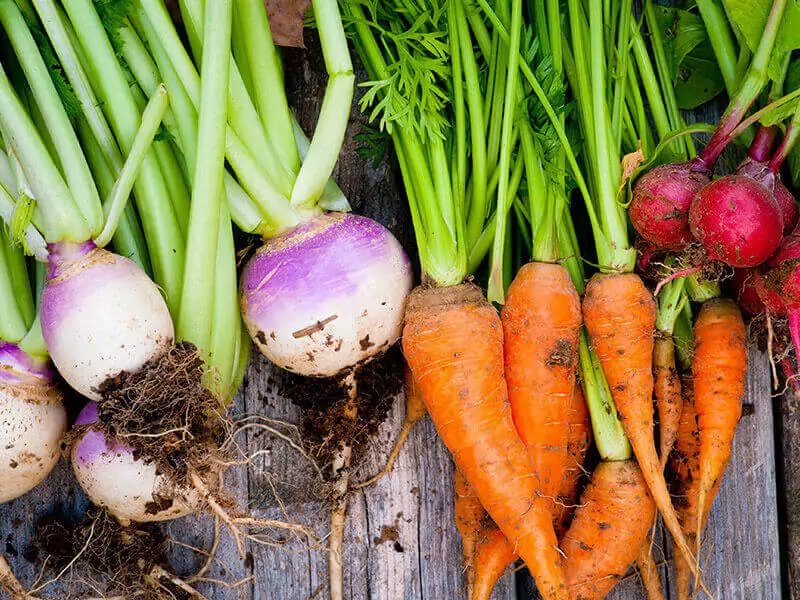
The root vegetable is an umbrella term for various underground veggies, including onion – a bulb one that I will explain more in the following part. Since this type grows underground, it can absorb all the soil’s nutrients to develop.
In this type, there are other 2 sub-categories in this type: taproots types (carrot, turnips, horseradish, etc.) and tuberous varieties (potatoes, yams, taro, and more).
Most root vegetables are high in carbohydrates, fiber, and vitamins, with various health advantages.
If you have a small garden at home and want to grow some root vegetables, check this instruction for more information.
10. Fungi
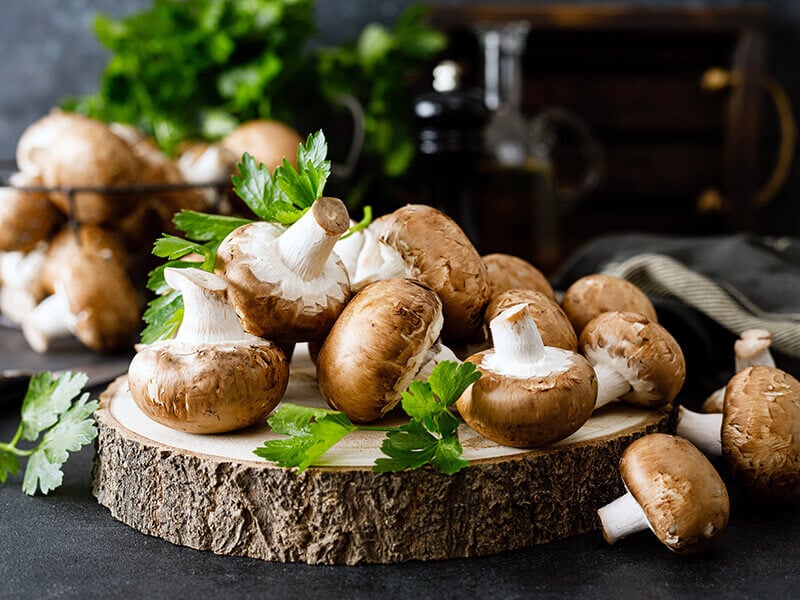
Fungi in the vegetable world normally refer to several edible mushroom species. In general, mushrooms are formed by some fungi and grow on the ground, soil, or any place that can nourish them with or without light.
Another reason that makes them fungi vegetables is they are packed with nutrients and vitamins that can improve the quality of human meals.
Do not underestimate mushrooms; they can offer many more health benefits than you expect.
11. Tubers
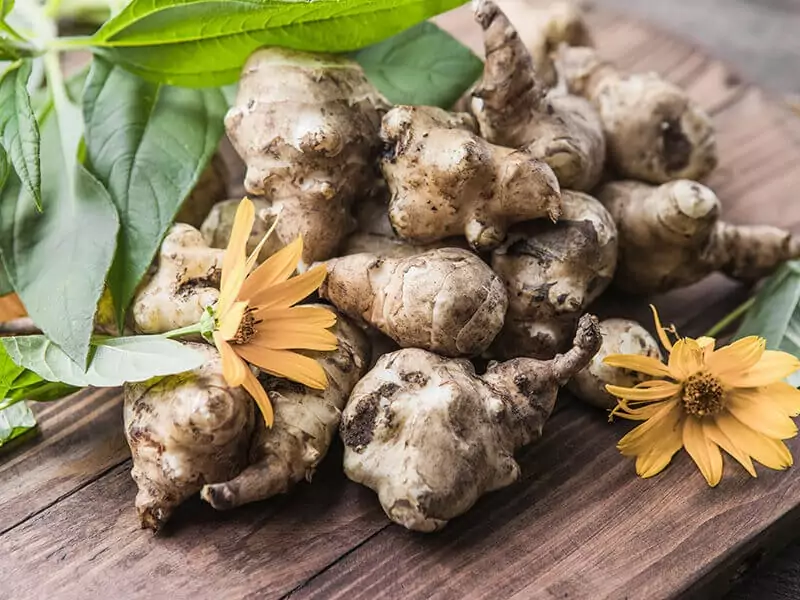
Are tubers root vegetables? The correct answer is yes and no. Yes, because root vegetable is a broad term that includes tubers. And no, because not all root veggies are tubers.
Tubers are also underground foods like root veggies, but they can develop from elongated stems rather than enlarged roots, which you can see in potatoes or yams. Moreover, the tubers only have 1 function as storing nutrients or foods to develop.
Or you can simply remember: this veggie type can produce several tubers underground from 1 plant, while root ones can only yield 1 vegetable from each plant, like many types of carrots. Plus, tubers generally have more starch than root types.
Next to potatoes and yam, there are other well-loved tubers like ginger, taro, jicama, Jerusalem artichokes, and more.
12. Stems

Can you find the similarity between asparagus, leeks, celery, and rhubarb? People eat their plant stems as vegetables, which makes them stem vegetables.
They are different from roots or tuber types as people only eat their above-ground part rather than the veggies under the soul. Stem vegetables are also easy to cook with as there are many ways to prepare them (or combine them with other foods).
13. Leaf
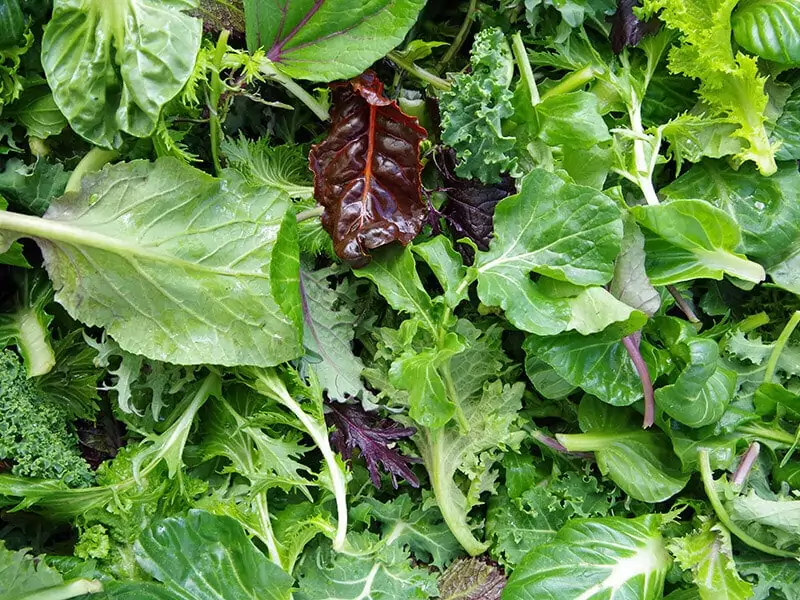
Leaf vegetables indicate the leaves of the plant that are used as veggies. You can easily imagine them with spinach, cabbage, lettuce, and kale as the leaf ones. And some of them are consumed with their soft shoots and petioles.
You can eat them raw (e.g., salads, lettuce, or spinach), or you can boil, stew, steam, or stir-fried these greens. The biggest advantage of leaf vegetables is the low level of fat and calories. Plus, they are rich in protein, vitamins A, C, and K, dietary fiber, and minerals.
14. Bulbs
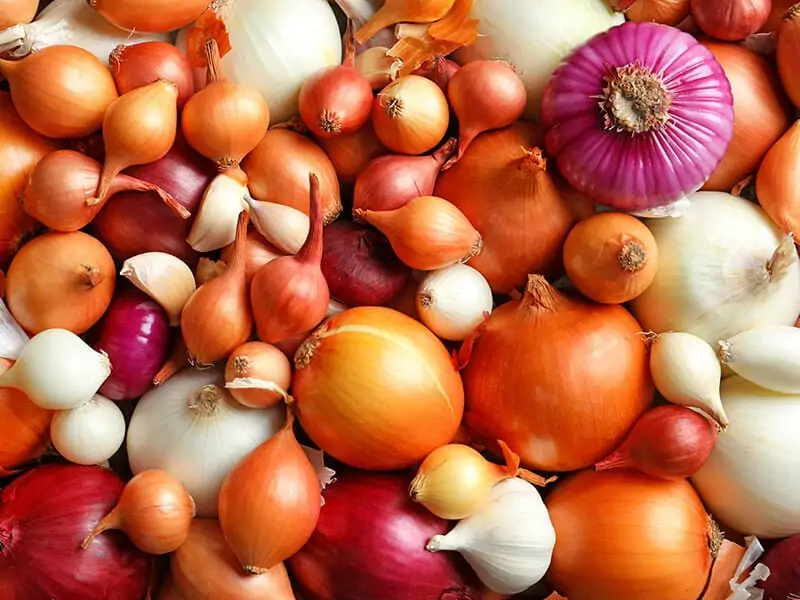
Bulb veggies develop underground and store nutrients and moisture to survive in harsh conditions. For easier understanding, garlic, leek, onion, chive, etc., are some commonly-consumed bulb vegetables.
Moreover, they are not an ideal type of veggies to eat directly. Instead, people use them in their cooking recipes to enhance dishes’ flavor thanks to bulb vegetables’ aromatic taste.
Some bulbs are not only for cooking purposes; they are also a perfect component for various medicinal usages. Indeed, they can be good food to improve immunity or prevent cancer.
15. Flower Vegetables
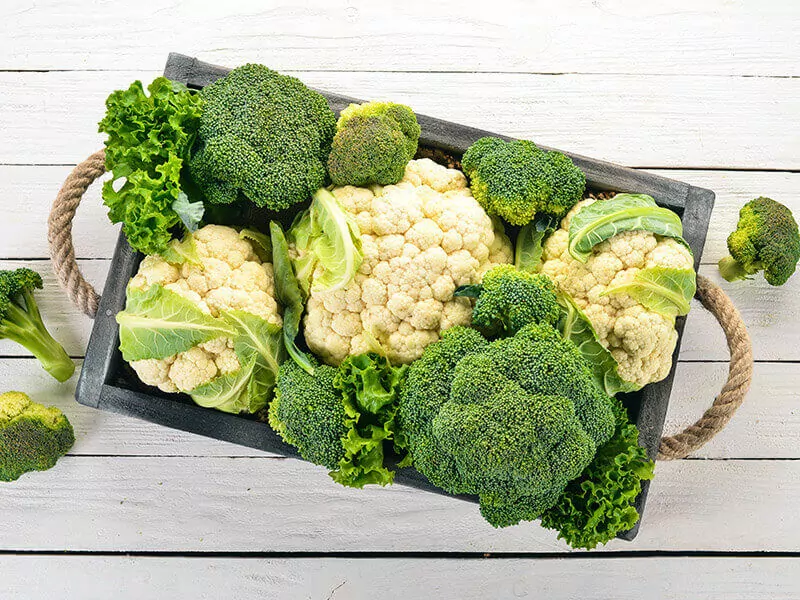
Flower vegetables (or inflorescent vegetables) are edible flowers and flowering stalks that humans can enjoy in their meals as a green fresh food source. Cauliflower, broccoli, cabbage, and artichoke are some familiar examples.
But other beautiful flowers can be taken as vegetables like pumpkin flowers, sunnhemp flowers, dill, and more.
16. Fruit Vegetables
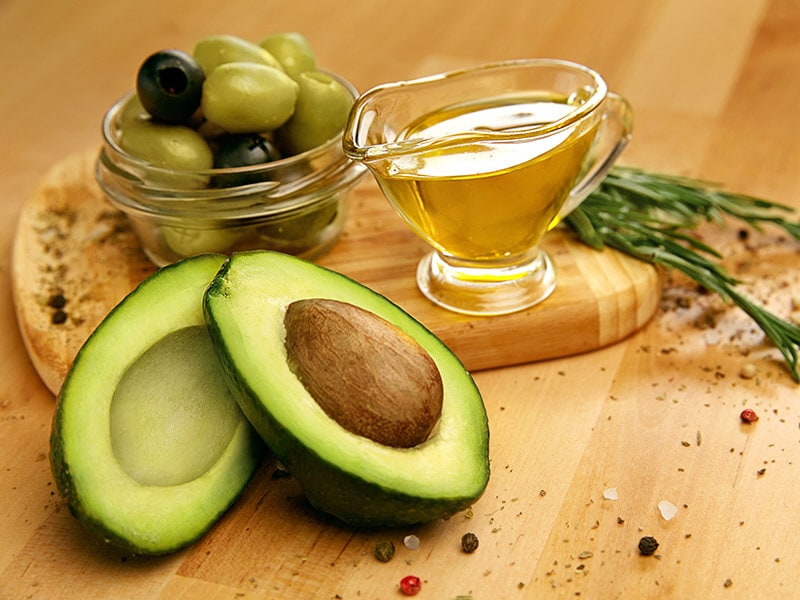
If someone asks you whether tomatoes are fruit or vegetable, you can answer this is a fruit vegetable. Technically, fruit vegetables are normal fruits that people use as vegetables for culinary purposes. Sometimes it refers to the plants that bear these fruits.
Cucumber, avocado, summer squash, chili peppers, zucchini, olives, tomatoes, and more, are classified in this list due to their importance in various cooking ideas. For more information, there is a term to refer to fruit vegetables like zucchini and summer squash.
In the UK, people call them “marrow” to describe green and neutral-flavored varieties. Moreover, their rind is pretty firm and edible. Though they might not be the best in nutrients, marrow veggies are rich in potassium, folate, and provitamin A.
17. Legumes
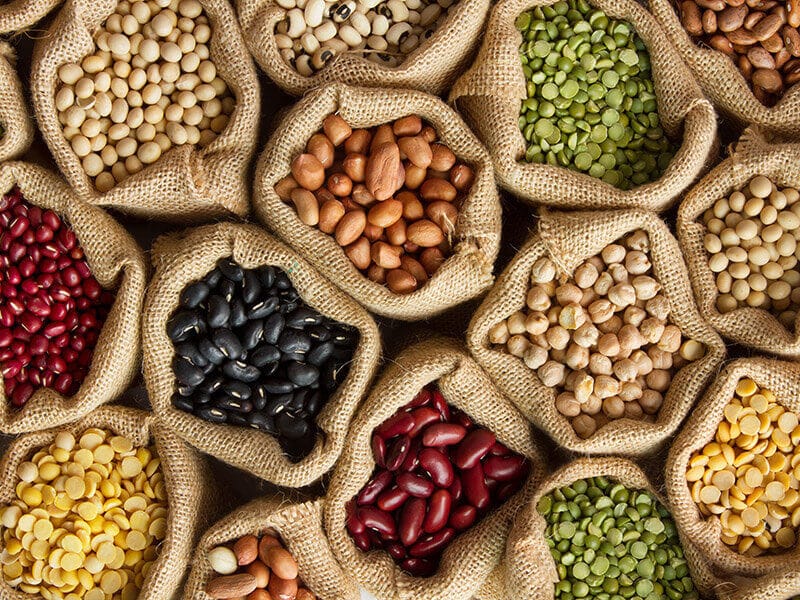
Legume is a small class of vegetable that refers to the fruit or seed of a plant. If you use these seeds as a dry grain, they are called “pulse”. The majority of legumes release their seeds by opening along 2 sides of their seam.
Various kinds of beans, peas, peanuts, and lentils are the most well-known legumes. If you need foods low in fat yet high in nutrients and fiber, legumes will fit your diet requirements. What’s better, you can consume them as a natural protein source instead of animal meat.
People cultivate legumes commercially, mostly for human consumption and for livestock feeding. Some are used to make oil (like soybeans or groundnuts).
Let’s see how experts explain legumes with this introduction.
Protein Food Sources From On-Land Animal Products
Food products from on-land animals are meat, poultry, eggs, and various dairy products. And they have been the main food sources for humans for centuries. Let’s start with the most-used one – meat.
18. Meat
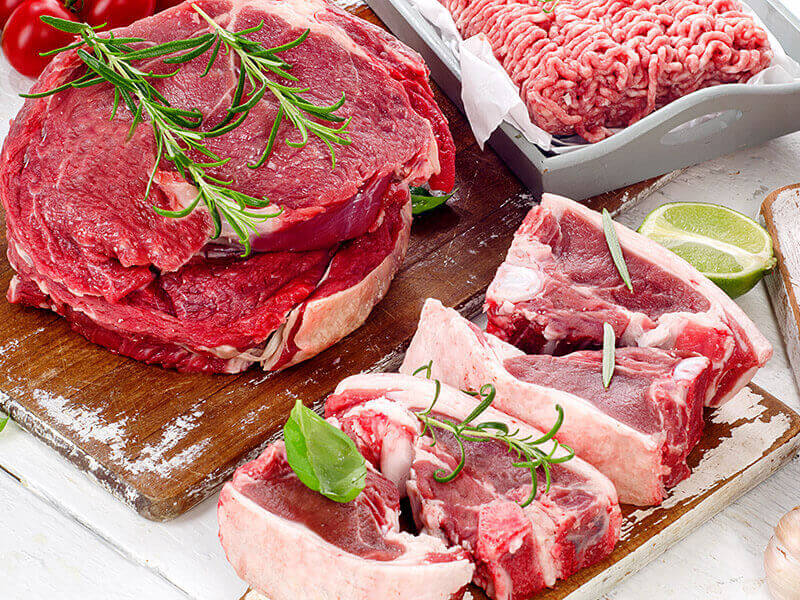
There are several meat types to refer to the flesh of animals. They have been used as food from the beginning of human history. They started from hunted animals, but today, meat production is a big industry that provides sufficient protein sources for everyone.
The word “meat” also refers to other edible animals’ parts, like fat, tendons, muscles, ligaments, etc. Overall, meat is a crucial part of numerous cuisines. Popular on-land meats worldwide are pork, beef, mutton, veal, and venison.
Normally, people cook meat in several ways before consumption. However, some meat types can be eaten raw, for example, beef. Using meats worldwide might differ in different ethnicities, religions, taste preferences, economics, or environments.
Nowadays, many people prefer being vegetarians or vegans as they do not want to consume meat as there are other plant-based foods containing many proteins and nutrients to replace meat, for instance, legumes, vegetables, and more.
This meat analysis will show you what meat types are the best ones.
19. Poultry
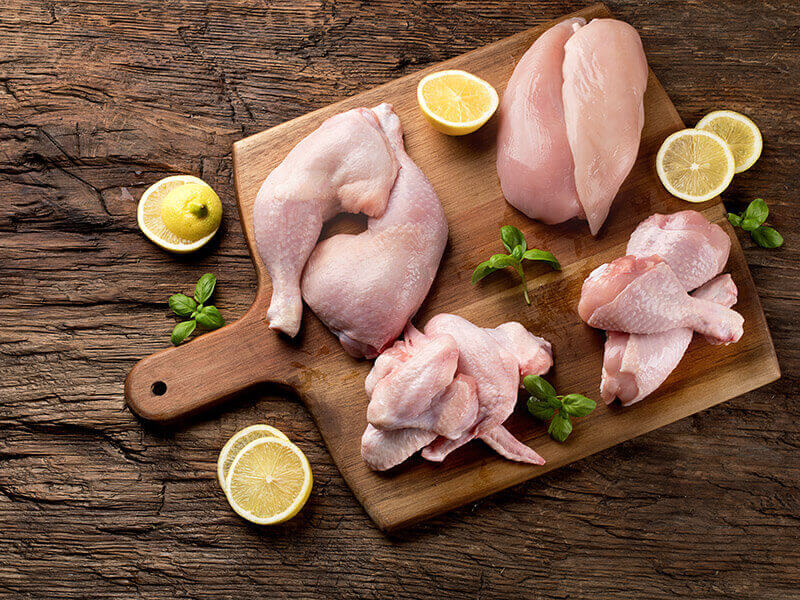
Poultry is a type of meat, too, consisting of many domesticated birds like chicken, turkey, duck, quails, and even pigeons. The term “poultry” derives from the old French word “poule”, implying small animals.
In reality, poultry is the second most widely consumed meat after pork, thanks to the high-quality protein without too much fat. However, all poultry meats must be cooked thoroughly to reach the minimal internal temperature of 165°F for safe eating.
People should handle poultry correctly to prevent any cross-contamination of harmful bacteria because consuming affected poultry can result in food-borne illness or other serious diseases. Besides, you can easily buy them in fresh, frozen, or ready-made form with or without bones.
20. Egg
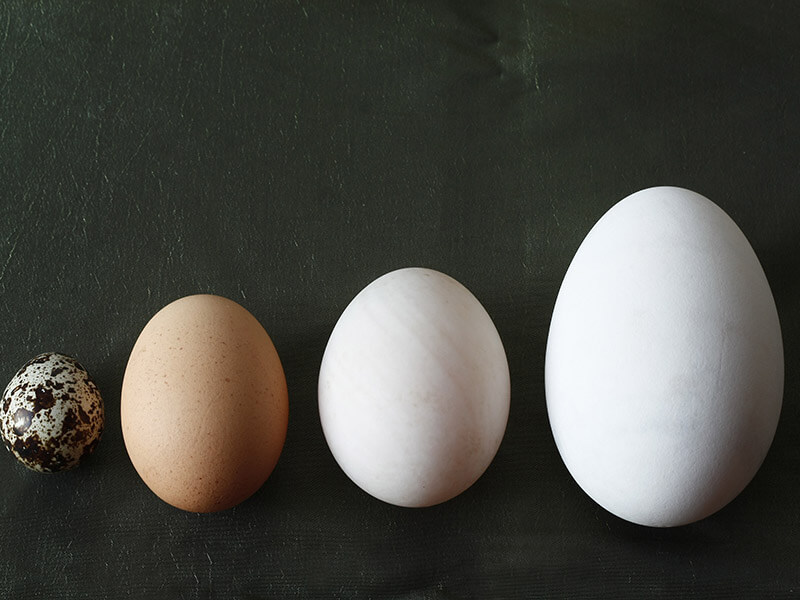
Next to breeding poultry for their meat, eggs are another important food laid by female animals with a lot of egg varieties. Moreover, other edible species’ eggs like mammals, reptiles, or fishes, but chicken eggs are the most widely used type.
Eggs consist of 3 main parts: eggshell, egg white (albumen), and egg yolk (vitellus) with thin membranes. The best thing about them is they are very affordable yet high in nutrients like A, D, E, and K. On the other hand, ostriches’ eggs usually go with luxury dishes.
The versatility of eggs is huge. They can be good on their own, like poached, scrambled, or fried eggs, or you can use them as the ingredients for sweet and savory delicacies, especially baked goods.
Specifically, egg yolk is an excellent thickening agent for other foods. There are also other health concerns about eating eggs. Ironically, they can cause allergy or stomach-related issues due to their rich source of protein.
21. Dairy Foods
Dairy products are food made from animal milk. They can be buffalo, goat, cow, or sheep. Milk, yogurt, cheese, and butter are the 6 most well-known dairy products with huge popularity worldwide. So keep reading to see how important (and nutritious) they are in your diet.
Milk
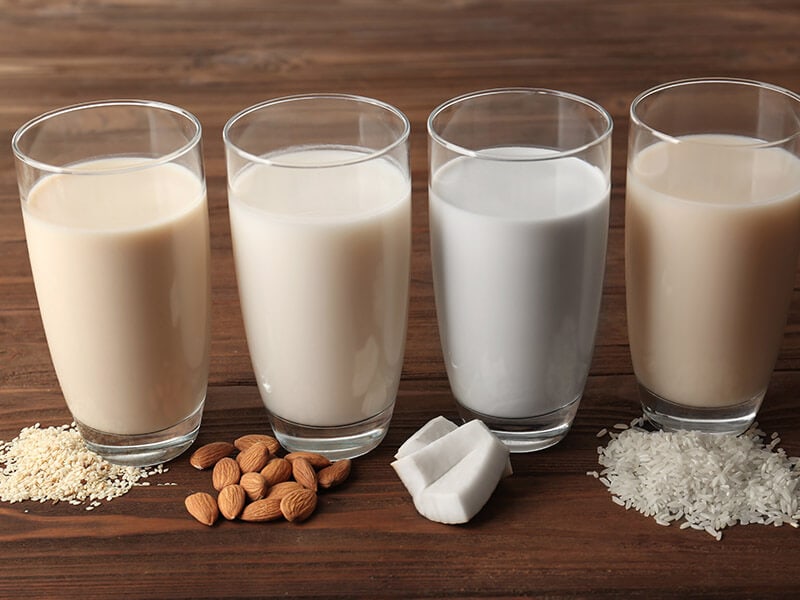
Milk contains many minerals, vitamins, proteins, and other nutrients to strengthen your daily health, particularly bone fractures. A cup of any milk type is also a great way to start a new day along with your breakfast.
They are liquid food collected from animals, especially cows, and India is the biggest milk producer globally. However, Germany, New Zealand, and the Netherlands are the top milk exporters globally.
Milk is the base ingredient for cheese, yogurt, butter, and other foods. The importance of milk in people’s lives is significant, from culinary to non-culinary uses.
However, if you are lactose intolerant, ensure you choose lactose-free milk to prevent any unexpected symptoms like diarrhea, gas, nausea, or bloating.
Check here to determine whether milk is 100% healthy.
Whey
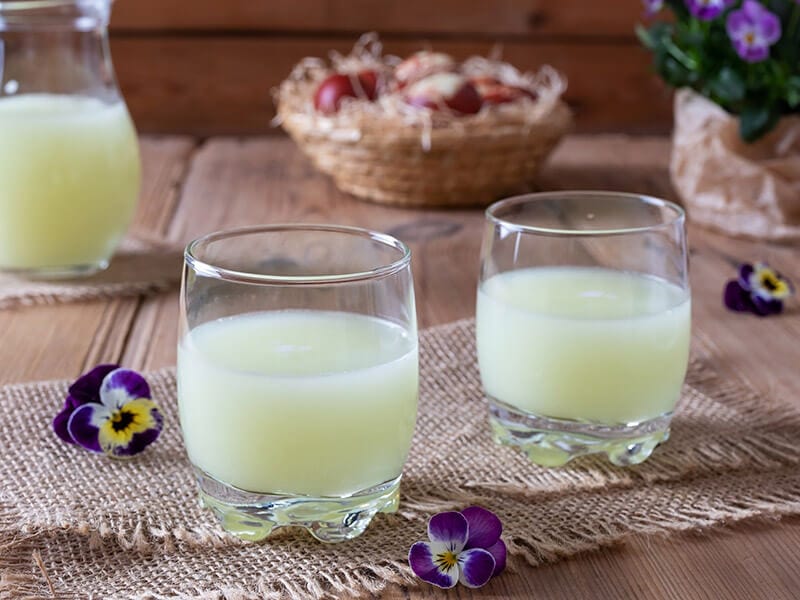
Whey is a nutritious liquid made from the curdling process of milk. This is the main ingredient for whey cheese (e.g., brunost or ricotta cheese), whey butter, and other commercial uses. In the past, they used to be a popular drink in many coffee houses.
There are 2 common types of whey, including sweet whey that derives from the production of hard cheese with rennet like Swiss or Cheddar, and acidic whey from yogurt and soft cheeses.
Besides, if you are a gymer, you must be familiar with whey protein. Indeed, whey is also a significant component in many commercial protein-supply powders. And they are a perfect supplement for bodybuilders.
Cheese

There are approximately 500 kinds of cheeses with a wide array of flavors, textures, and appearances. The exact origin of cheese is unclear, but the earliest cheese-making was around 8,000 BCE, when humans domesticated sheep.
People created cheese by accident as they stored milk in animals’ stomachs, and milk started to curdle by the rennet enzymes in these stomachs. Today’s commercial cheeses also use this enzyme to make cheese.
Moreover, there are other ingredients in modern cheeses like herbs, spices, food colorings, or other flavorings. And Europe has the highest level of cheese consumption in 2021.
Obviously, when talking about cheese, I guess you would think about many types of Swiss cheeses, right? In reality, the United States is the biggest cheese producer globally, and the followings are Germany, Italy, and France.
Butter
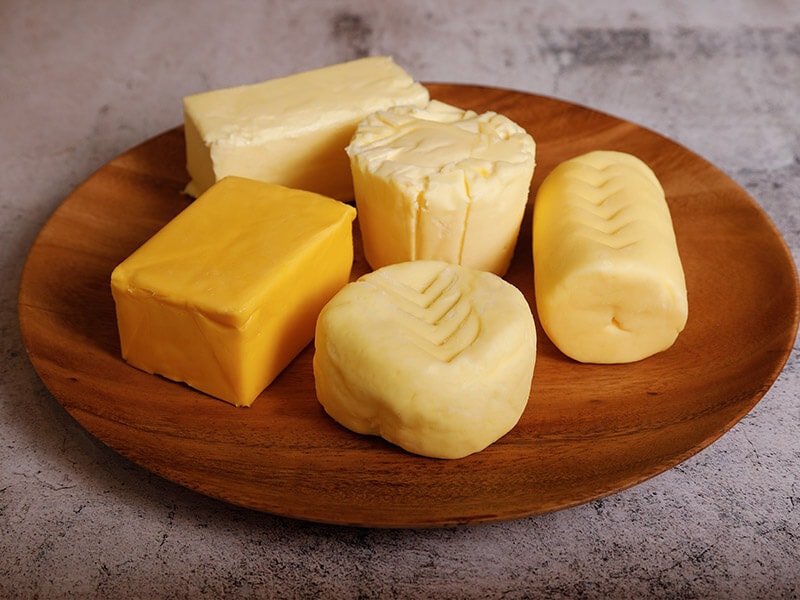
Butter is another food made from milk, including cow, buffalo, goat, sheep, and yak’s milk. The initial form of butter was made from sheep or goat’s milk. To prepare butter, you have to churn milk or cream to separate the fat from these ingredients.
They can have a solid form in the fridge, soften at room temperature, and melt when cooking. Some commercial butter also includes salt and food coloring.
There are various types of butter, like cultured butter (made with fermented cream), clarified butter (such as ghee – simmered and strained butter to remove all water and milk solids), and sweet cream butter (made from pasteurized fresh cream).
People have several ways to consume butter. They can be a creamy spread to pair with your bread sandwich, or an ingredient in baked or fried dishes. You can use it to make sauces as well.
Let’s see how people prepare butter commercially.
Yogurt
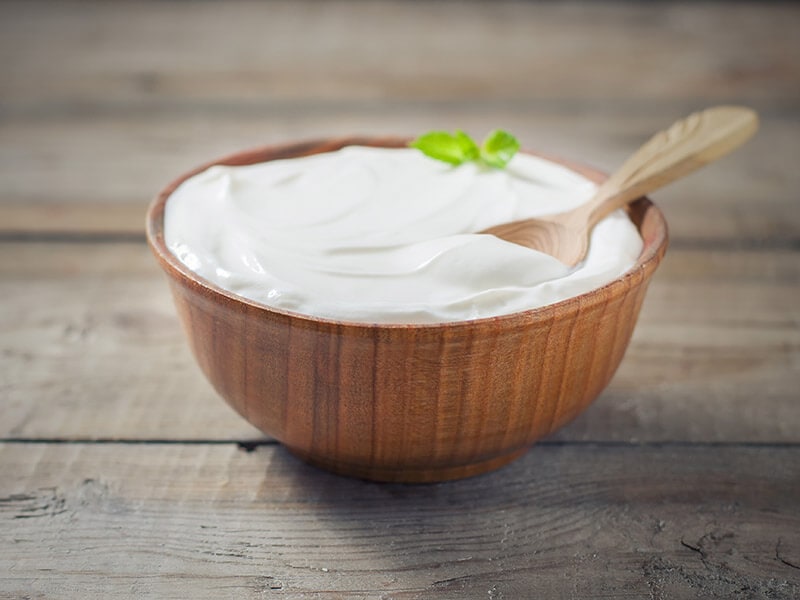
Yogurt (or yoghurt) is a product of fermented milk with healthy bacteria, and this process refers to yogurt culture. And this is a centuries-old good that can trace back to 5,000 BC. Humans can use any type of milk to make yogurt, including cow, goat, ewe, camel, and yak.
The bacterias in yogurt are Lactobacillus bulgaricus and Streptococcus thermophilus. After heating milk, they combine these bacteria with milk to give a smooth and pudding-like texture with the typical sour flavor.
Commercial yogurts come in various types with many flavors and styles (low-fat or full-fat). Greek yogurt is one of the best-liked types.
The health benefits of yogurt are surprisingly good since it contains many vitamins, protein, calcium, and probiotics, which is a superfood for your gut and immune system.
Ice Cream

The last dairy product that I bet no one can refuse is ice cream. There aremany ice cream variants, but all of them are ideal frozen snacks or desserts to make the hot summer days no longer a trouble.
Ice cream is an ideal example of frozen desserts, which I will discuss later. The main components of making ice cream are cream, milk, and sweetener. There are plenty of flavorings of ice cream to fit many different demands.
However, the term “ice cream” might be different depending on the country. It only applies to products consisting of more than 10% milkfat in the USA. But in Italy, it is used for all ice cream variants regardless of the ingredient percentages.
The popular way to eat ice cream is in a cup or wafer cones. You can also find them in a carton box in the supermarket, or on the street from hawkers.
Seafood
The ocean is not only famous for its beauty and full of surprising creatures that people have used as food for a long time.
Speaking of seafood, people mainly think about fish and shellfish as human food sources. But in this part, I will show you other edible things, which might be costly, but their nutrients are incredible.
22. Fish
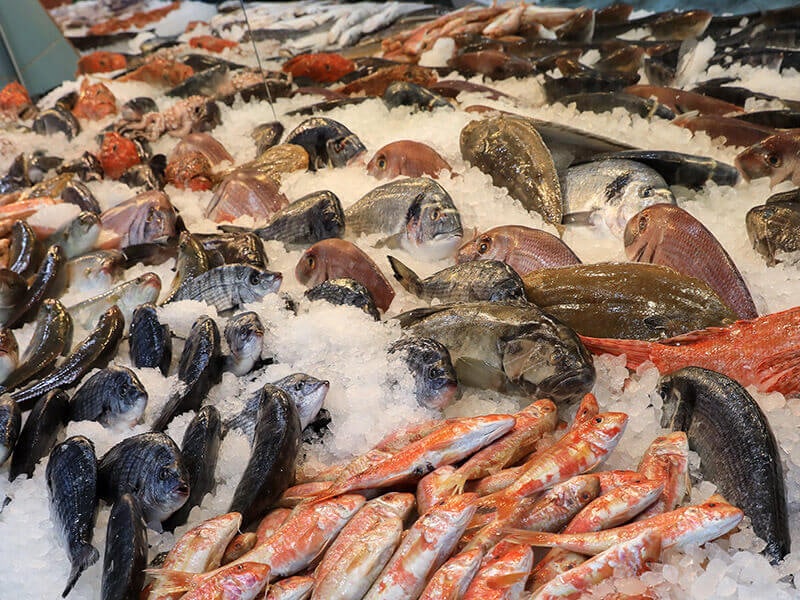
Fish species are countless, either living in freshwater or the sea. And they have been superb human food around the world. Overall, they are cold-blood creatures with more than 32,000 species. Plus, fish’s protein is around ⅙ of the world’s protein.
Nowadays, the fishery is a big industry to breed various popular fish species, like tuna, salmon, cod, herring, anchovy, and flounder. Humans have many ways to consume fish. They can be eaten raw (like in sashimi – a renowned food in Japan) or cooked (frying, baking, grilling, etc.)
Fish can be a good food to cure, pickling, or smoke. And different types of fish preparation result in different flavors. Regarding their health benefits, fish, particularly oily ones, can offer omega-3 fatty acids (like salmon and tuna) and decrease cardiovascular disease and the risk of heart attacks.
But please pay more attention when consuming fish as choking on fishbone is dangerous. Moreover, ensure that you are not allergic to fish.
Check here to find out the top healthiest fishes.
23. Shellfish
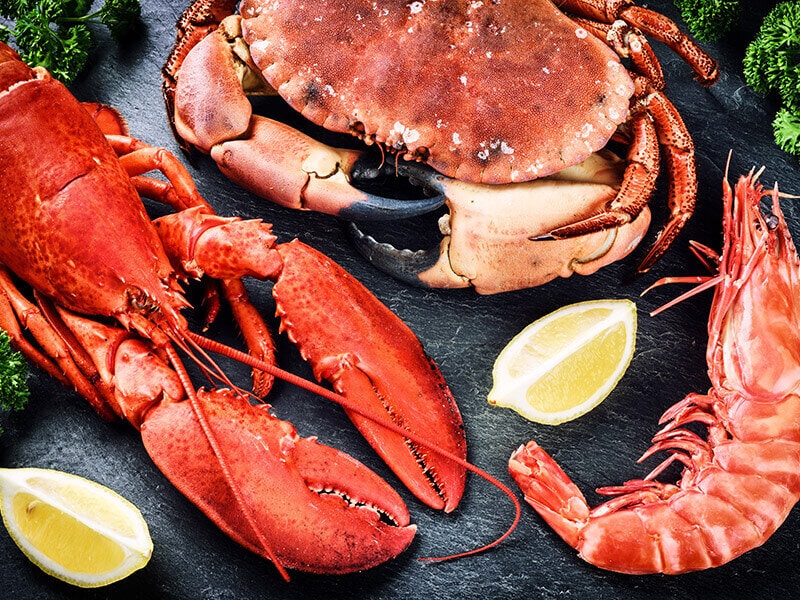
Shellfish is another seafood that I bet many of you love, such as crabs, oysters, shrimp, lobsters, etc. Though it has “fish” in the name, shellfish is not fish. And many types of shellfish live in saltwater, but some live in freshwater, namely mussels and crayfish.
Additionally, shellfish is one of the foods that cause allergies. But their tastiness is undoubted. Shellfish feature an excellent source of protein and have a significant role in many cuisines, from Europe to Asia.
Lobster is a special delicacy normally served with baked potatoes, butter, or corn in the USA. Clams are Americans’ favorite to make clam chowder. In many exotic Mexican foods, shrimp are more popular.
24. Roe
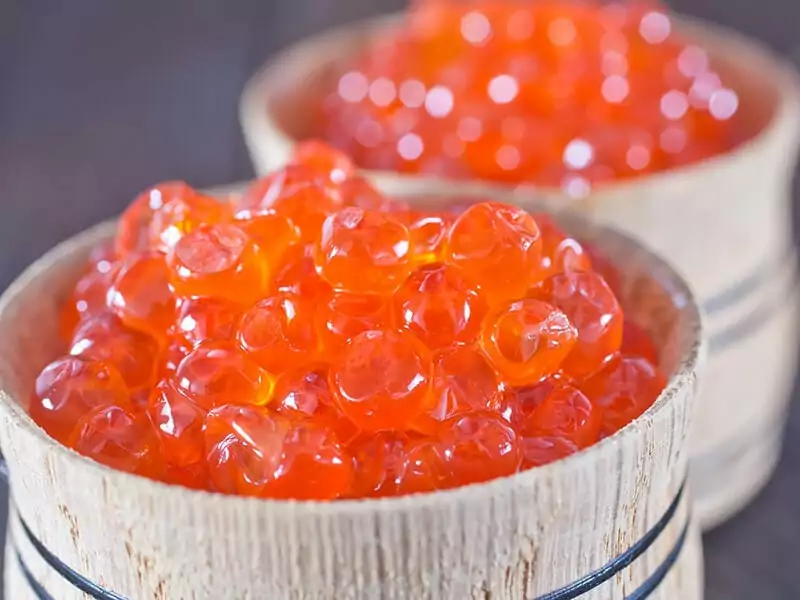
Roe is the tiny eggs of fish, squid, sea urchins, shrimps, or scallops. As seafood, humans mainly use it raw (as many caviar types), or combine it with other ingredients to create many delicacies (like sushi with salmon roe).
The best thing about them is their high omega-3 fatty acids and vitamin B12. Some marine seafood like salmon, mackerel, lumpsucker, mullet, etc., are suitable types to collect roe. But do not mistake roe as soft roe (aka white roe) because these are fish milts, not eggs.
The popularity of roe has spread around the world. Particularly, in Japanese cuisine, salmon roe plays a certain part in several traditional dishes. Roe is an expensive item because it requires time and physical labor to produce.
Grains
Technically, grain is an edible seed of plants, but I list them in a separate category because I want to highlight the importance of grain in our food source. Plus, grain varieties vary, and some have been staple foods for decades.
Grains can go well with many other foods. Some grain types are ideal components to make various kinds of porridge. In this part, I divide them into 3 main classes: whole grains, refined grains, and noodles, to easier grasp comprehensive information about these essential foods.
25. Whole Grains
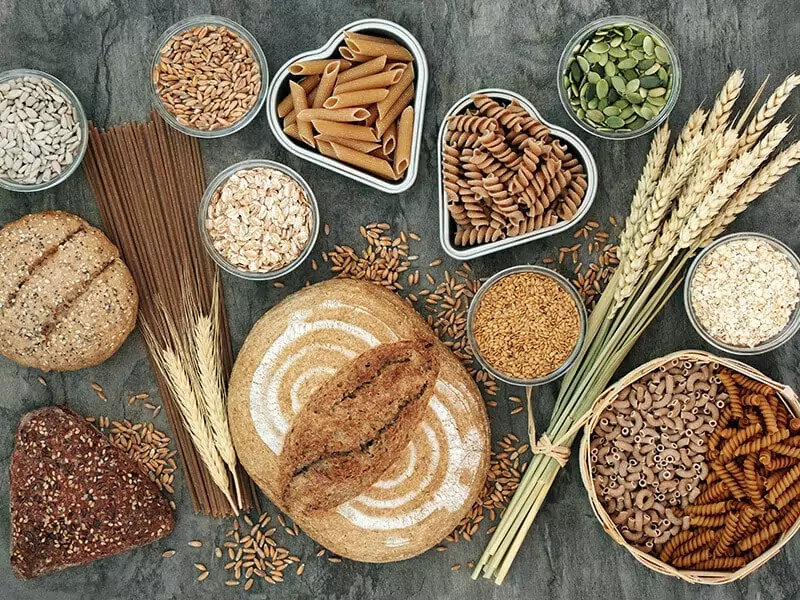
What are whole grains, by the way? Whole grains are a group of any cereal or pseudocereal consisting of bran, germ, or endosperm. They contain various rice varieties (except white rice) barley, buckwheat, rye, millets, oats, maize, whole-wheat bread or pasta, and more.
Whole grains, generally, are better than refined grains since they have more nutrients, like vitamins, dietary fibers, carbohydrates, and minerals. Therefore, these are superb food for both children and adults.
Indeed, consuming more whole-grain dishes can reduce the risk of many diseases, from cancer to obesity. But if you want to buy 100% whole-grain foods, check their ingredient list carefully because some foods, like bread, might look similar to whole-grain bread. However, they are not.
How does whole-grain food benefit your health? Do not miss this introduction.
26. Refined Grains
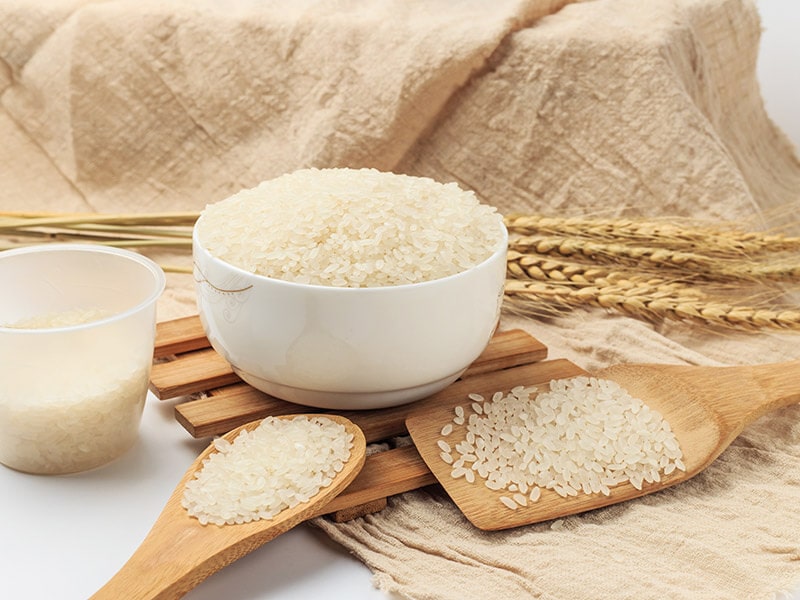
Refined grains, conversely, only contain endosperm. During the refining process, the nutrients in grains decrease, such as vitamin B, iron, or fiber. But do not misjudge them; some refined grains have a higher level of energy to support humans’ bodies.
Overall, as they are processed grains, their texture is finer with longer shelf life. White rice, white bread, white pasta (among various pasta varieties), or any baked goods made from white flour are examples of refined grains. They are also great for reducing weight as the fiber in refined grains is low.
Nowadays, most refined grains are enriched because people add iron and various B vitamins (except fiber) after processing.
27. Noodles
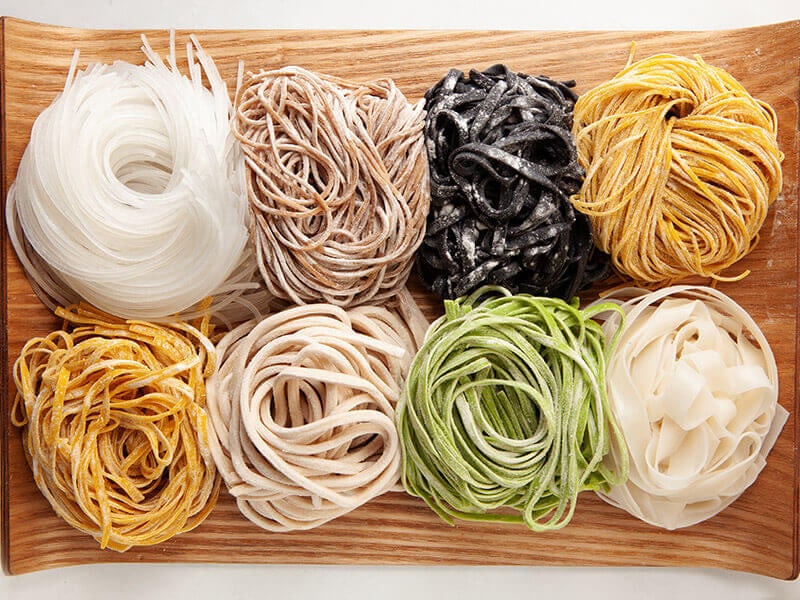
Noodle is also a staple food in many Asian cuisines like China, Korea, Vietnam, Japan, and the Philippines. Their main ingredient is unleavened dough, which comes in different sizes, shapes, and colors.
The basic way to make noodles is by rolling them flat and cutting them into various styles. The most common noodle type has a long and thin-striped form. Some might have a shell, tube, string, wave-shaped, or other appearance.
Many people confuse the differences between noodles and pasta, but they are 2 different foods. However, the way to cook them is quite similar (e.g., boiling them in water with a bit of added salt or cooking oil (to prevent them from sticking).
But you can also deep-fry or pan-fry noodles, while the pasta is not ideal to do that. Moreover, they can be fresh-making (which can last in the fridge for the short term), or dried for longer uses.
Herbs and Spices
There are many ingredients to enhance the flavor of dishes, but herbs and spices are the 2 best ones to ensure that. If you are not a fan of these flavorings, you might change your mind after reading the 2 following parts.
28. Herbs
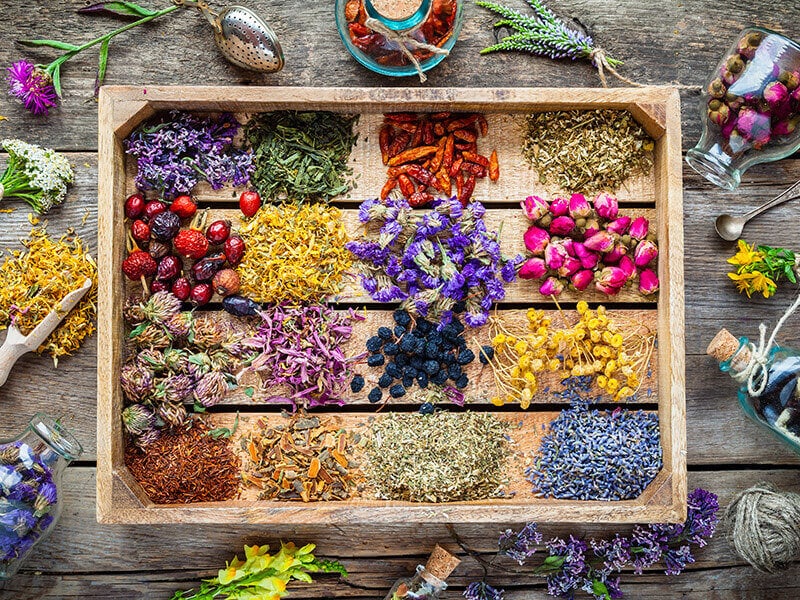
Herbs are a plant-based food with green color and soft texture. In botany, people describe them as plants that do not have woody stems. They are versatile since you can use them for cooking, medical or aromatic purposes. Some of them are considered spiritual plants.
Using herbs in culinary arts is not a new concept since they can significantly increase the flavor. Common herbs that you can find in many recipes are thyme, parsley, basil, or rosemary. These herbs are perfect for both cooking and botanical gardening.
Different herb species have different tastes. But they all share 1 characteristic: they are strongly aromatic with robust flavor.
People also use herbs to make tea have nicer aromas, such as mint tea or chamomile tea. Consuming herbs might help you avoid many illnesses like diabetes, high blood sugar, heart disease, or cancer.
Let’s see how a famous chef – Gordon Ramsay uses herbs to prepare delicacies.
29. Spices
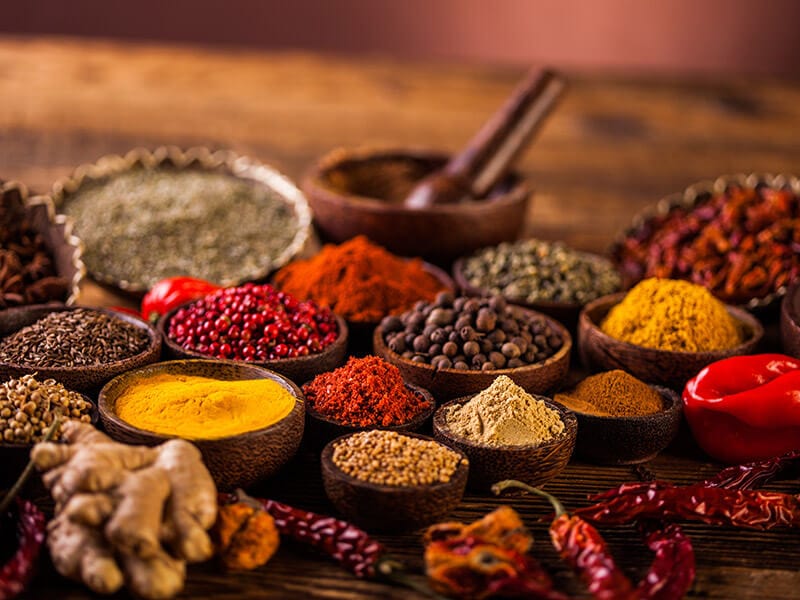
Like herbs, diverse varieties of spices prominently add flavor to bland dishes and turn them into extremely tasty treats. Besides, some spices can change the color of your food, especially those hot and spicy ones.
Spices are available in many forms, fresh, ground, or dried. The most convenient form is powdered spices. But please note that different conditions will have other tastes; for example, fresh gingers generally have more flavor than dried gingers.
India is a top spice producer with 75% global production, among other cuisines. The history of trading spices is also from the Indian subcontinent in the early 2,000 BCE. Therefore, whenever you taste Indian dishes, their flavorful taste will surely blow your mind.
Humans’ common spices in cooking are cinnamon, black pepper, nutmeg, ginger, cloves, and cumin. They are also components of making perfume or cosmetics. And some of them might be expensive.
Prepared Foods
Prepared foods refer to cooked treats consisting of basic foods (e.g., fruits, meats, vegetables, seafood, etc.) and/or staple foods (e.g., noodles, rice, bread, pasta, and more). They are a big group since humans have numerous ways to make food. Keep reading to know what they are!
30. Appetizers
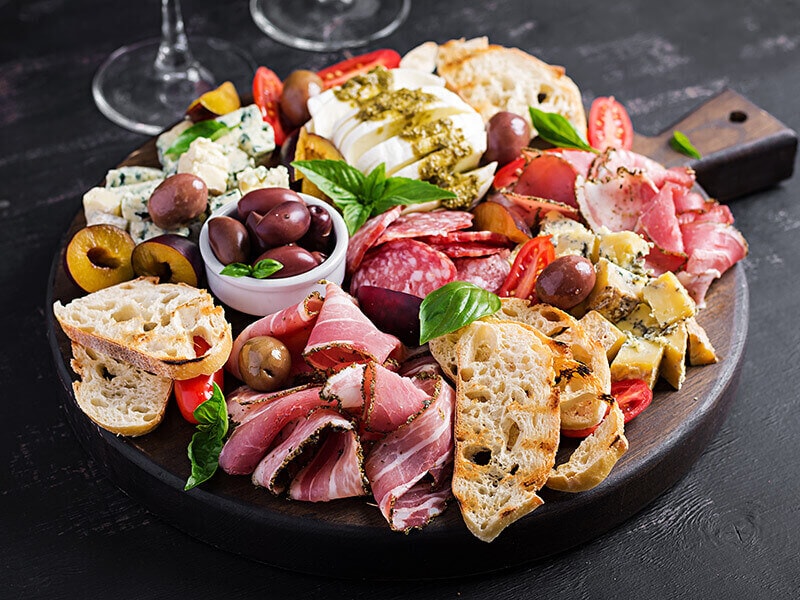
Appetizer (aka hors d’oeuvre, or starter) is the first dish served before the main course (as a part of a meal), or people can consume them before seating. Thus, they normally come in small portions, and people usually use their hands to consume them.
The list of appetizers is varied, based on countries or varieties. There are many simple starter ideas in the world, so you can also make them for your home party.
Hors d’oeuvre has several types. They might be a dip, salad, spread, etc., made from various ingredients such as cheese, bread, vegetables, fruits, meat, and more. In the past, they used to be served between courses.
31. Bread
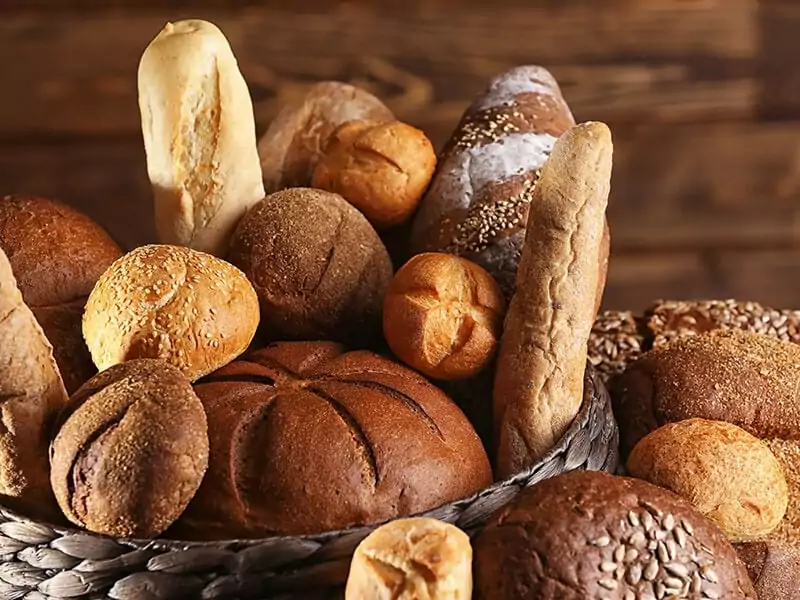
No one can refuse the importance of bread and its varieties in the culinary world. Indeed, bread is one of the oldest foods humans created from 2 main ingredients: flour and water.
The origin of bread can trace back to 30,000 years ago in Europe and Australia. To make bread, people use yeast, natural leavening agents like sourdough, or synthetic agents such as baking soda to make the flour rise.
The other ingredients in bread are unlimited, affecting their taste, texture, color, nutrition, and shelf life. Generally, bread is a staple in the Middle East, Europe, Asia, and Africa. And the list of bread types is vast, varying by country and region.
Besides, bread can be seen as a grain source; therefore, its nutrients are huge with rich amounts of vitamins, dietary fibers, iron, carbohydrates, and more.
Want to know more about bread types globally? What you are looking for is here.
32. Desserts
The next part is about desserts such as Confectionery and Candies, Cakes, Pies and Tarts, Pastries, Cookies and Crackers, Frozen desserts, Custards, and Puddings. Thus, their contribution in diversifying the list of human food is huge.
Some desserts require high skills, but some dessert recipes are easy to make. So instead of buying them at stores, why don’t you spend your weekend having some fun by making them at home? I guarantee your kids will love this idea.
Confectionery and Candies

The term “confectionery” indicates sweet treats made from high levels of sugar. And candy is a part of it, including concentrated sugar in water, flavorings, and colorings.
There are 2 main types of confectionery that might overlap, namely sugar confections and bakers’ confections. Baker confections include several treats like caked, small pastries, or other baked foods, making them ideal for dessert.
However, sugar confections refer to candies, chocolate, bubble gum, etc. No one is sure about the origin of confectionery, but some believe it appeared in ancient times.
Cakes
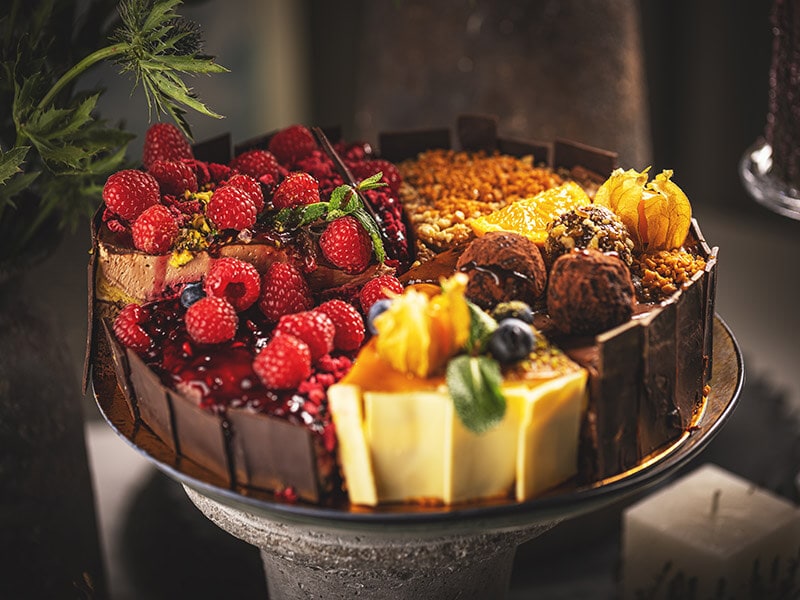
The cake is another centuries-old food item made from eggs, flour, nuts, honey, and milk. Nowadays, the cake’s main ingredients are salt, sugar, butter (or oil), eggs, and flour with countless cake ideas.
Flour is very important to decide the success of baking cake. It should be made from soft and fine-ground wheat to form a light and not-too-dense texture for a cake.
Also, bakers use some additional components like fresh, dried fruit, fruit preserves, nuts, cocoa, vanilla, etc., to make the cake burst in flavors and have a beautiful visual. Additionally, a cake is a must-have item for many big events like weddings, birthdays, or anniversaries.
You will see many varieties of cakes in many forms. And most of their appearance is mentioned through their names; for example, cupcakes resemble a small cup with a small shape, while many sheets of cake form layer cakes.
Pies and Tarts
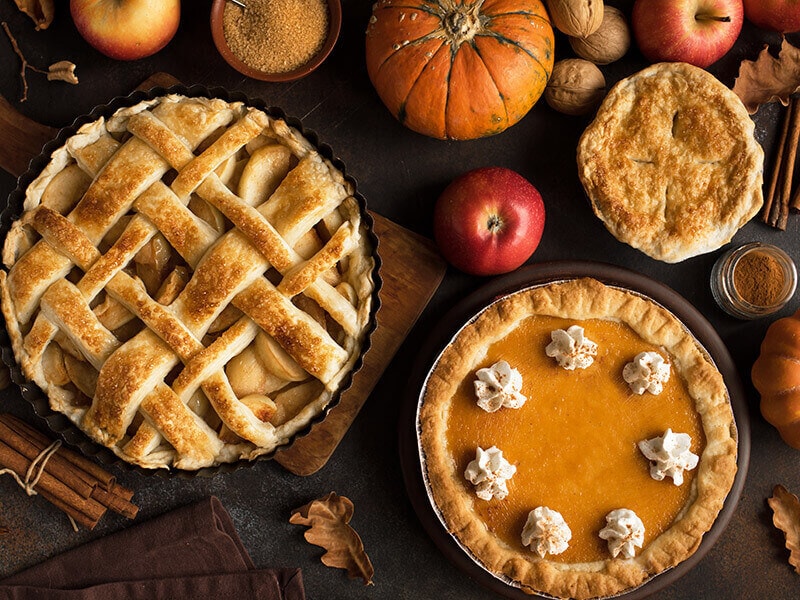
Pies and tarts feature baked goods made from dough with a sweet or savory filling. But pie and tart are 2 different things: tart’s crust is firm and thick enough to stand by itself, while pies have sloper sides since they are made from softer pastry.
Another distinction is that tart is the open-topped baked goods with a bottom crust, while pie’s top is covered by layered crust. The size of these 2 varies from big to small ones that can serve individually.
Plus, The huge varieties of pie and tart will surprise you, either sweet or savory. The most popular pie in the USA is apple pie in different styles, pumpkin pie, or pot pie with meat and veggies.
Other tarts like meringue tart, Treacle tart, or Tarte Tatin – an upside-down tart including apples or other fruits, are very famous in Western countries.
Pastries

The main ingredients to make pastry are flour, eggs, water, baking powder, and shortening (like butter or lard). People also call this baked good pastry dough, which is rolled thinly and baked.
The term “pastry” comes from the French word “pâtisserie”, indicating any dough-based pie and not traditionally sweet dishes. But the flavors of today’s pastry can be sweet or savory, based on their other ingredients. And you can find them everywhere in the world.
There are various types of pastry, such as shortcrust, puff, flaky, phyllo, choux, and hot water crust pastry. If you want a quick dessert, try puff pastry sweet courses. Another simpler version is a shortcrust pastry made from butter, salt, flour, fat, and water to form the dough.
But if you prefer a bit crispy, flaky, and tender, flaky, puff, and phyllo pastry are better options. Plus, choux pastry usually comes with cream filling, so it would be the best for those who prefer the butter and creamy flavor in every bit of it.
Let’s visit a Korean bakery to see how they make 14 different types of pastries every day.
Cookies and Crackers
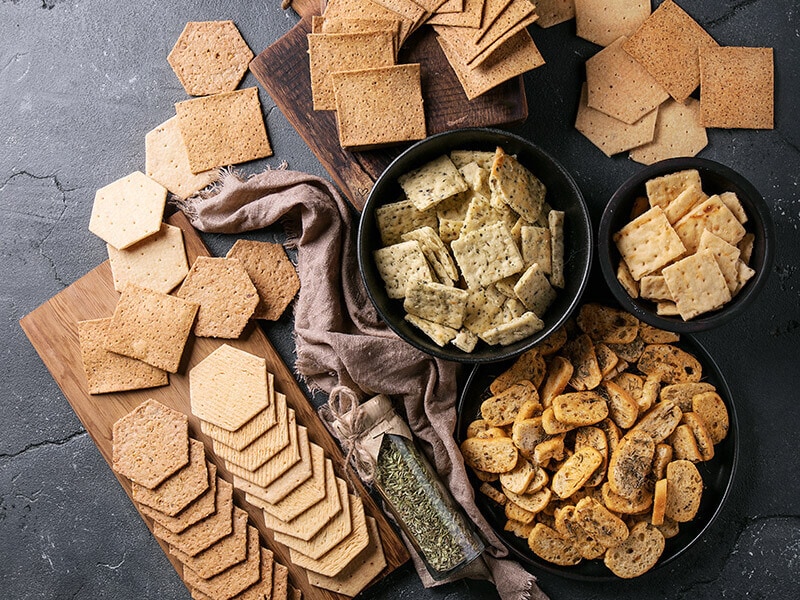
Cookies and crackers share the same characteristics as small, flat-baked goods typically made from flour. But crackers contain layered dough, and cookies require an artificial leavening agent.
The key difference between them is that cookies are sweet, whereas crackers are savory as their seasonings (or flavoring) are herbs, cheese, salt, and seeds. And distinct cookie styles might require more ingredients like eggs, oil, butter, oats, nuts, or raisins.
Moreover, cookies normally accompany items with milk, tea, or coffee, while crackers are great to enjoy on their own or served along with dippings, jam, pâté, butter, cheese, meat slices, or fruits.
In other English-speaking countries (except the USA), the natives also call crunchy cookies biscuits. Similarly, crackers can refer to as water biscuits in British English. And they are both perfect snacks for everyone.
Frozen Desserts
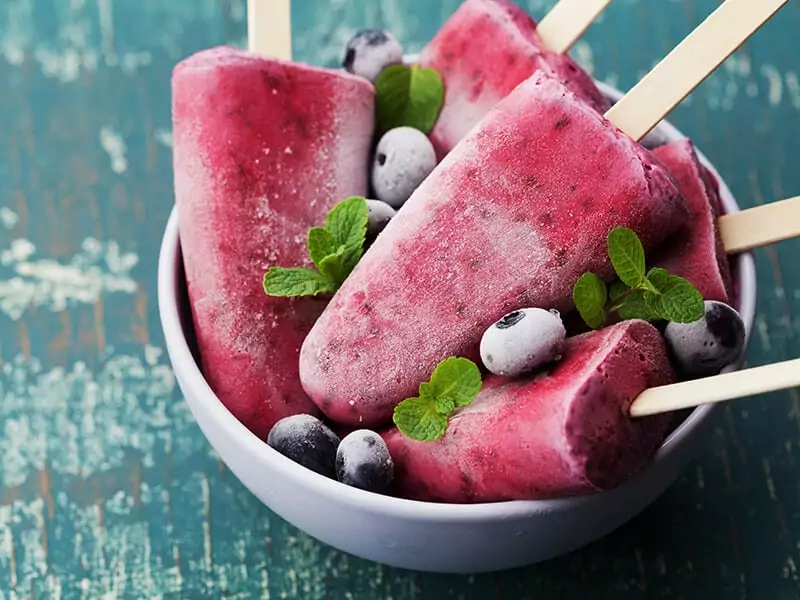
Frozen desserts are made from freezing solid, liquid, or semi-liquid like water, milk, cream, or custard. Therefore, these cold treats come in various styles, including ice cream, sorbet, ice pops, and more.
Regardless of their styles, frozen desserts are favorites of all ages, especially children. The ingredients of frozen desserts are diverse. You can easily make them at home; for example, try some Cuisinart ice cream ideas. They are stunning and delicious.
Looking for the easiest homemade frozen desserts? This short demonstration is an excellent answer.
Custards and Puddings

Custards feature a greater amount of milk (or cream) and egg yolk in their recipes. There are plenty of awesome and easy custard desserts that humans can cook in a double boiler, bake, steam, or pressure cook.
Custard is a famous food in French cuisine with many variations in different names. They also have a thick texture in different consistency, including thin sauce or thick cream for pastry.
But do not mistake them with dessert in pudding form. They might share the same gel-like texture with consistency, but the key difference is pudding uses corn starch, flour, or gelatin for thickening, while eggs are the main ingredient in custard.
33. Dumplings
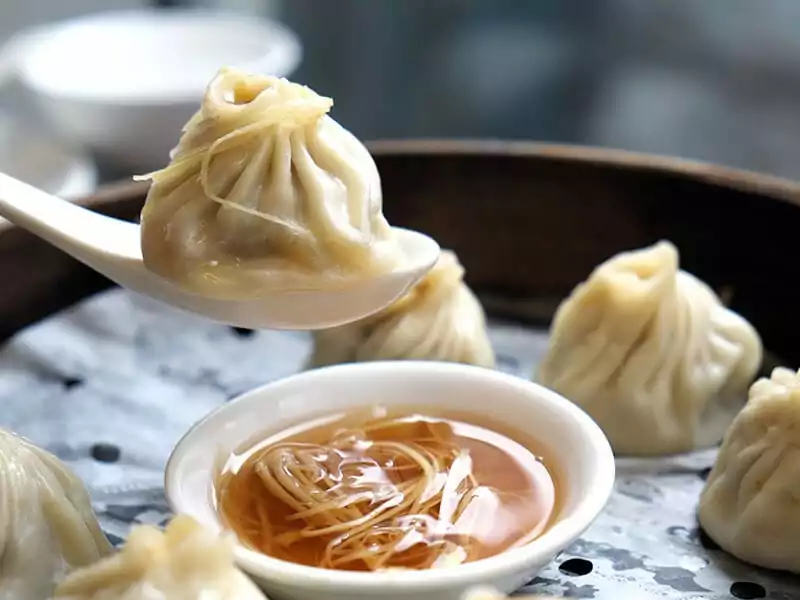
Dumpling is an umbrella group to indicate dishes featuring dough wrapping a filling inside, or without a dough. Flour, bread, potatoes, and buckwheat are common ingredients to make the dough.
Additionally, the fillings usually come with cheese, meat, fish, vegetables, fruits, tofu, or sweet ingredients. But if you love something cozy, you can try the idea of mixing chicken and dumplings for a hearty dinner.
Each cuisine has its own way of preparing dumplings. There are several ways to cook dumplings, like frying, boiling, steaming, simmering, or baking. And Chinese cuisine is the best example of an exhaustive list of different styles of dumplings.
34. Salad
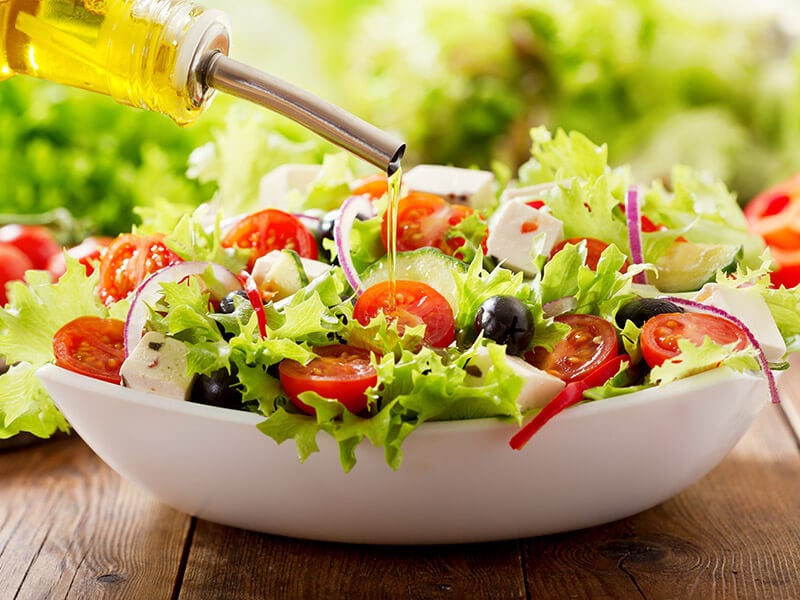
One of the freshest dishes containing various veggies is a salad, particularly a leafy type. You can find many ideas for making salad meal prep or salad for winter on the internet. And most of them are ready in a few minutes.
Basically, they are easy and simple food. Besides veggies, meat, grain, sweets, or grain are other ideal components to make your salad dish more flavorful. Plus, some parts might be raw, while some are cooked.
The history of salad is worth knowing. You can see this video to know more:
35. Soups and Stews
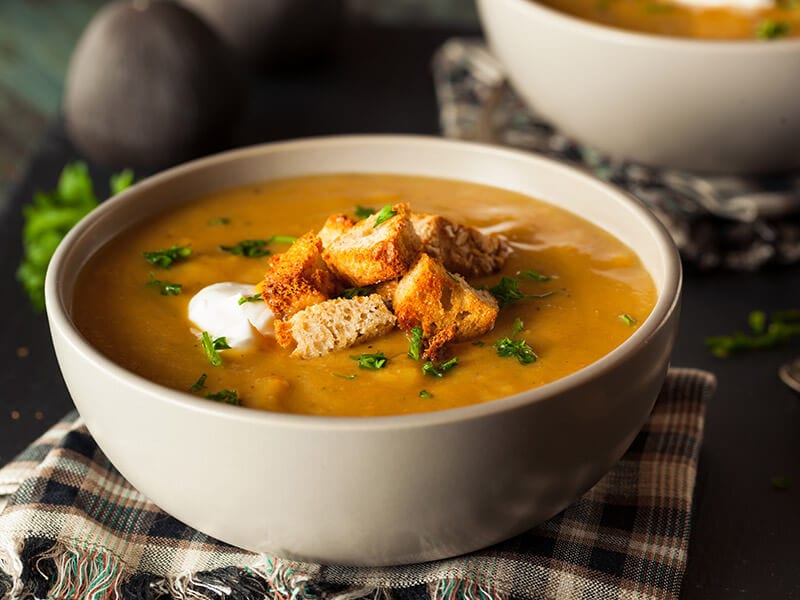
Soups are a comforting dish consisting of liquid (stock, water, juice), meat, and veggies. They can be hot soups (e.g., Italian-based soup recipes) or cold soups. Of course, hot soups would be better if you feel under the weather or on chilled days.
To make hot soup, people will boil ingredients in water, like meat, to get a broth. Then, veggies, flavorings, or other components will be added. In short, they are liquid food, and soup and stew are not the same dishes.
So what is stew? They are also liquid-based dishes combining solid ingredients and liquid. However, stew refers to dishes prepared by stewing, and their liquid level is lower than soup. For easier understanding, stews might be thicker than soups.
36. Snack
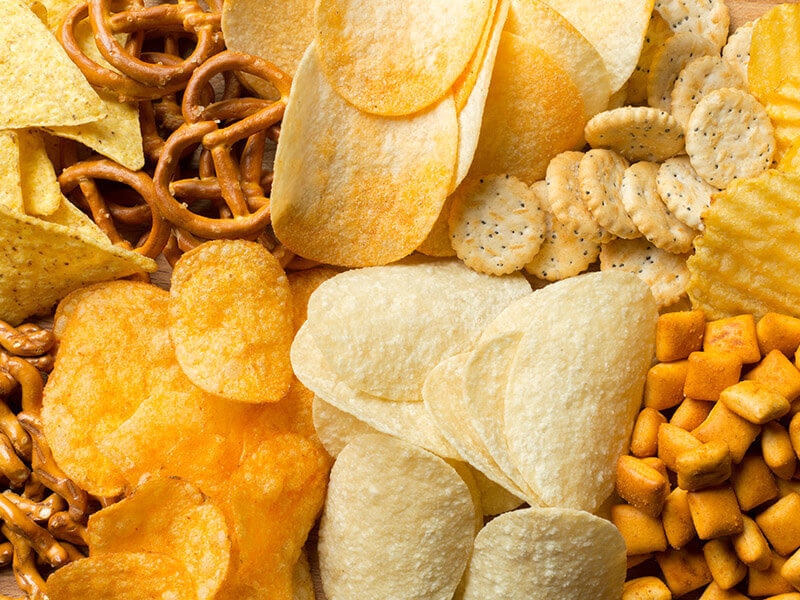
Snack implies small-portion food to enjoy between meals. In some countries, people also eat snacks before bedtime. You can buy them at the supermarket as packed foods or processed foods. And you can also make them at home if desired with fresh components.
Snack’s ingredients might be fruits, nuts, sweets (like candy), cold-cut meat, etc. Many store-bought snacks might contain other components, preservatives, and sweetening agents.
The main purpose of serving snacks is their portability, convenience, and quickness. Processed snack is also a part of convenience food, which is better to bring along than other prepared foods.
37. Sandwiches
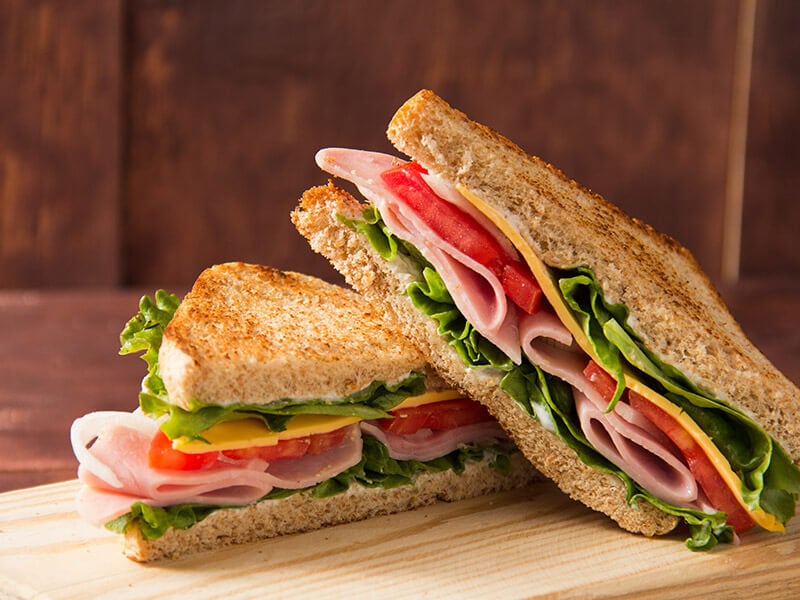
Sandwiches include 1 or more than 1 food type, like bread, veggies, meat, cheese, and more. The iconic characteristic of sandwiches is they contain 2 slices of bread that wrap other ingredients.
In the past, they were portable dishes with a certain reputation in Western countries, but now, you can find them in most places in the world.
There are countless delicious sandwich ideas to try out. They are quick, convenient, and healthy, so you can prepare them at home and bring your sandwich anywhere, such as the workplace, school, picnic, or enjoying on the road.
Let’s see what are the best sandwiches in the United States.
Religious Foods and Their Dietary Restrictions
Religion is another factor that has a huge impact on food consumption. There are certain dining rules and regulations that people in these religions must follow.
Below are 2 well-known religious foods you might have heard of, but you might not know exactly what they are and their restrictions. Make sure you will not skip this part!
38. Halal Food
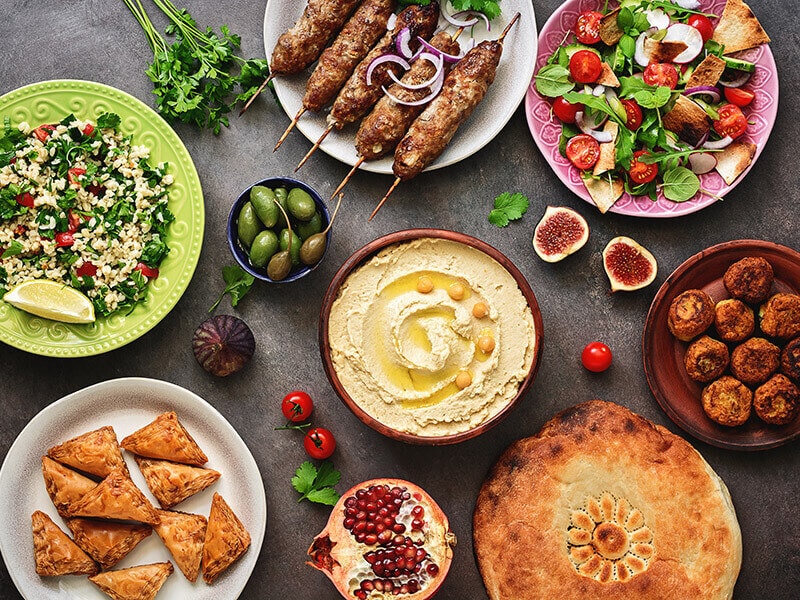
First, what is halal? In Arabic, the term “halal” means “permitted”, referring to several rules and laws that Islamic people must obey. And halal foods are especially about meat slaughter and preparation under these restrictions.
Specifically, processing meat for halal foods must be in the manner called dhabihah (except for fish or seafood). The slaughterer must use a sharp knife to cut the animal’s throat and jugular vein (but not their spinal cord) with 1 continuous motion.
These animals must be well-treated before slaughtering. And while cutting, the slaughterer must say God’s name. Animals that die from diseases, or natural causes are not halal meat.
Moreover, all the equipment, utensils, or machinery used to process these meats must be cleaned under Islamic law. And pork and other pork-based food is not halal food.
Here is a clearer introduction to halal meat that you should check.
39. Kosher Food
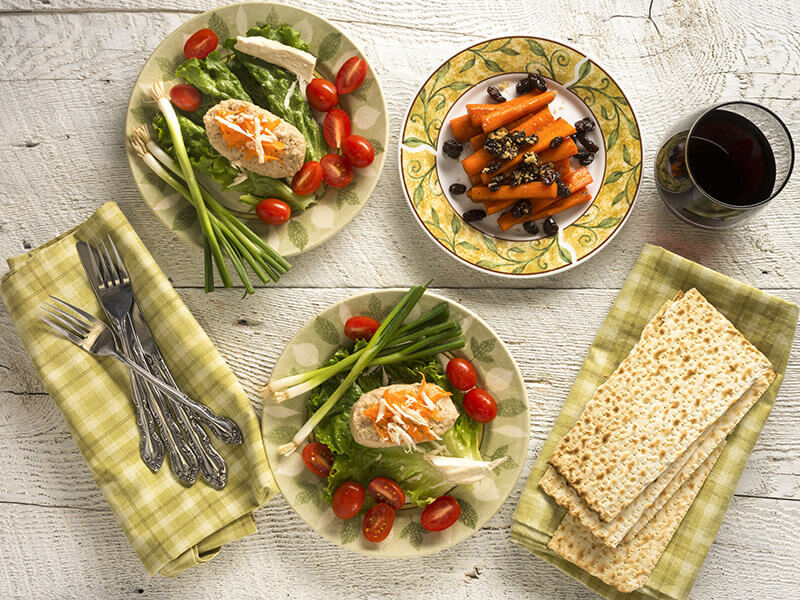
When it comes to dietary laws, kosher is similar to halal, except it is according to Jewish rules. Most foods and drinks around the world have kosher versions. However, not all Jews consume kosher food.
There are 3 main types of kosher food: meat, dairy, and pareve. Under the meat categories, they must be mammals that can split hooves and chew their cud, so pig, rabbit, camel, and hyrax are not kosher food. Birds are also kosher food, but not all (like owls and eagles).
Dairy products include milk, butter, yogurt, and cheese, but under these rules, you cannot cook and consume meat and dairy together. And pareve is about other foods that are neither meat nor dairy, like eggs, fish, and plant-based foods. But shellfish, catfish, and sturgeon are not allowed.
And like halal food, Jewish must follow certain rules in killing animals (in 1 single cut across their throat). There are other rules for consuming kosher food on religious holidays, like Passover, where all leavened grain foods are forbidden.
Learn more about kosher food with this documentary.
Others Prepared Food Types For Daily Diet
The last part is about other types of food, including Oils, Condiments (or Sauces), Dips, Pastes, and Spreads, Fast foods, Fermented foods, Dried foods, and Garnishes. They are all common food sources that people need to increase the quality and convenience of their eating habits.
40. Oils
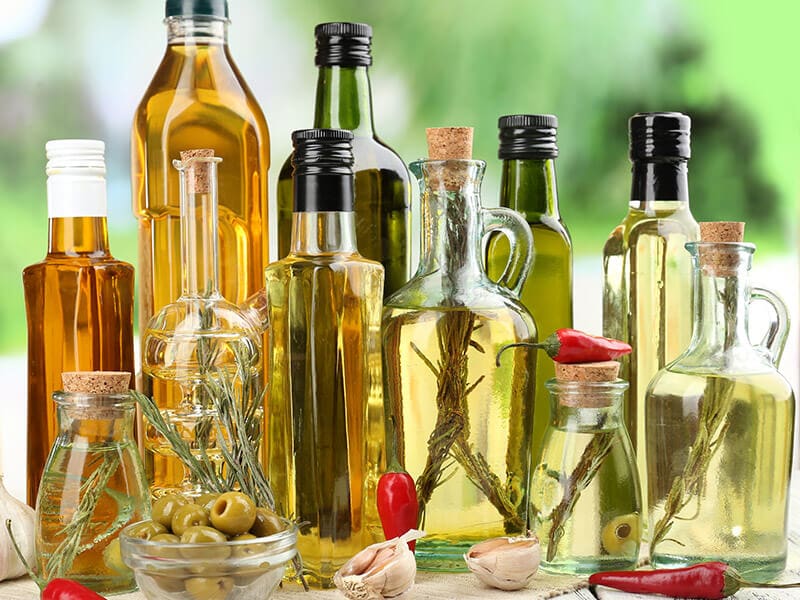
Oils are liquid fat made from animals and plants or other synthetic oils. They are normally used for various cooking methods, but if you wonder what oil is for salads, sauces, or dippings, there are plenty of them.
Some common plant-based oils are made from grapeseed, coconut, palm, olive, soybean, corn, peanut, etc., and animal-based oils are butter, lard, or other animal fats. However, if your priority is healthy eating, you should go with vegetable oil.
In short, non-hydrogenated oils (sunflower or soybean oils) are better for your heart health. And if you are a nut-allergic person, avoid those made from nuts like cashew, peanut, and more.
Another important note is different oils have different heat tolerance. If you prefer deep-fried foods, you should choose those with high smoke points (at least 375 F degrees), and vegetable oils, like quality oil made from avocado, palm, peanut, etc., are better.
41. Condiments (Or Sauces)
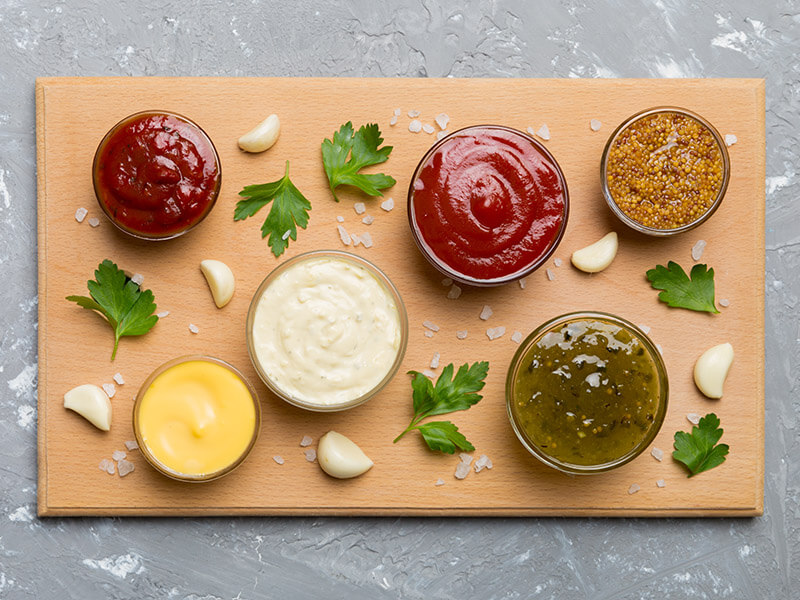
Condiments is a big term to cover all the sauces and powdered seasonings in cooking. The main aim of using condiments is to enhance the best flavor of dishes. These condiments can be added directly when cooking or served separately along with dishes.
Condiments vary from country to country. The most widely-used condiments are ketchup, mayonnaise, mustard, soy sauce, and more. Humans can add condiments before enjoying this food like they usually add mustard or ketchup on their sandwiches.
Also, there are other varieties in different condiments for example, you can find many mustard types in supermarkets. Most condiments sold in the market are in bottles; some come in single-serving packets as well.
Other condiments that come in powdered or dry form are black pepper, salt, sugar, za’atar (made from salt, sesame, and herbs), and more. Surprisingly, the condiment industry has the second biggest market in the USA, just after the cheese industry.
The huge quantity of condiments and sauces can confuse you, so click here to solve your problem.
42. Dips, Pastes, and Spreads
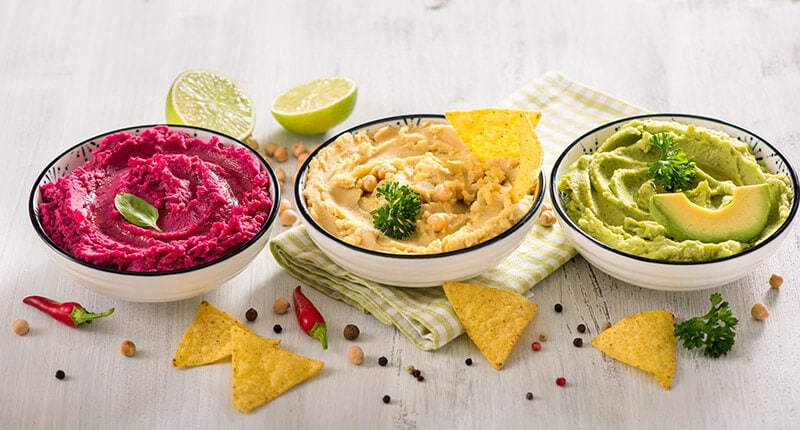
In fact, the dipping sauce is a sub-class of condiments that I just explained above. They can be thick or thin with a comprehensive list of ingredients. Humans typically enjoy dipping sauce with bread, crackers, veggie sticks, chips, etc.
Dips differ from other sauces since you have to place or dip your food into the sauce, not apply this sauce to your food. Additionally, paste is another term to refer to spicy or aromatic semi-liquid food, like curry paste, nut paste, or fruit preserves), and it is usually used as a spread.
On the other hand, the spread’s main aim is to perk up the flavor of other foods, like bread or crackers. The most common spreads are butter or soft cheese variants. Overall, dips, pastes, and spreads are sometimes overlapping, but they are important foods in humans’ lives.
43. Fast Foods
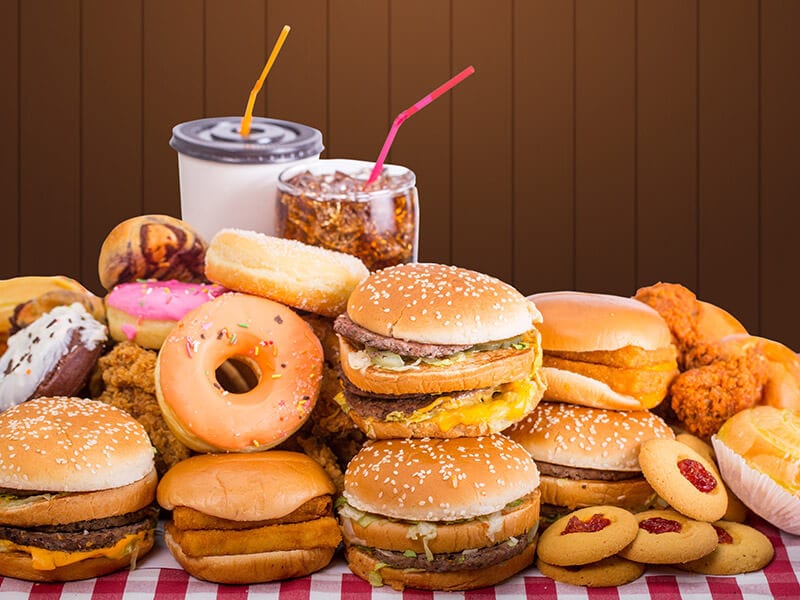
Fast food refers to commercially mass-produced foods, and their target customers are busy people who do not have too much time to sit down in the restaurant and enjoy their dishes. That’s why most fast-food chains have drive-through and take-out counters.
Fast food’s advantages are its convenience, cost-efficiency, and tastiness. But sadly, in many consumers’ perspectives, fast food is unhealthy as they are closely associated with cardiovascular diseases or obesity.
This is because fast food might contain high cholesterol, sugar, salt, or saturated fat. But it does not mean that you should not use them entirely.
Many fast-food restaurants offer healthier dishes like salad or mashed potatoes besides common items like French fries, fried chicken, pizza, hot dogs, etc. Of course, if you over-consume fast food, it might lead to other serious illnesses.
Take a trip across the USA and taste delicious dishes from many fast-food chains.
44. Fermented Foods
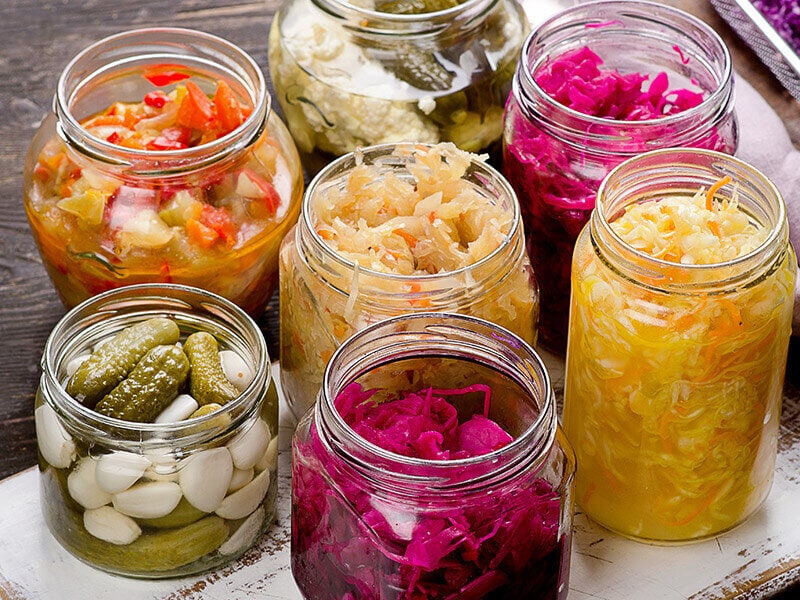
Fermented food uses microbes to preserve food. The fermentation agent can be yeast or bacteria. And pickles are the best example of fermented food, with kimchi or sauerkraut.
In fact, yogurt and cheese are also fermented food with huge popularity in the world. Other kinds of drinks can be considered fermented food like kefir, beer, buttermilk, etc.
Besides having a high reputation in many cuisines, it is also clear to see that they are an ideal food for a healthy gut. They contain many probiotic microorganisms to improve your stomach condition.
Lactic acid bacteria, the main star in probiotics, can also benefit your immune and metabolic health, or reduce other risks relating to cardiovascular problems.
Check this demonstration If you are still unsure about the health benefits of fermented food.
45. Dried Foods
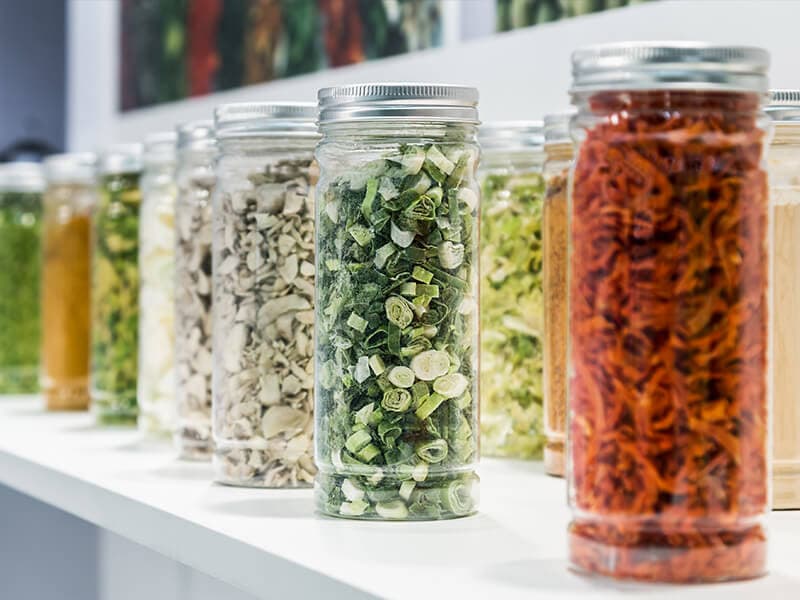
Dried food is another way to preserve food. They can be dried or dehydrated by a specialized machine to eliminate all the water content in the food and reduce the chance of bacteria growth.
They are also a long-history food that might appear around 12,000 BC in the Middle East or Asia. Dried foods can be made from meat, seafood, seed, fruits, and vegetables. The popular dried meat foods are jerky and sausage.
Dried fruits are also a delicious snack. Although they are dehydrated, they will not compromise nutrition and flavor. And the best thing about these dried foods is their long shelf life.
46. Garnishes

Interestingly, it is also a type of food with several kinds of garnishes. The main purpose of these foods is for decoration, making the dishes (or drinks) more eye-catching or visually appealing.
They offer color contrasting, like the green color of herbs (e.g., parsley or chives), to enhance the overall color of the dish. Therefore, you can eat garnishes. But some garnishes are not edible, like the baran – a plastic grass normally comes with sushi as a garnish.
It Is Hard To Imagine A World Without Food
Obviously, foods are the crucial nourishing source to help people maintain their life, boost energy, and develop. But as food is a broad term, many people do not recognize food types and their specific nutrients.
After reading this post, I hope you guys can have a complete view of food around the world. So if you find it helpful, please do not forget to rate and share it with your family, friends, and colleagues. Thank you for your support.
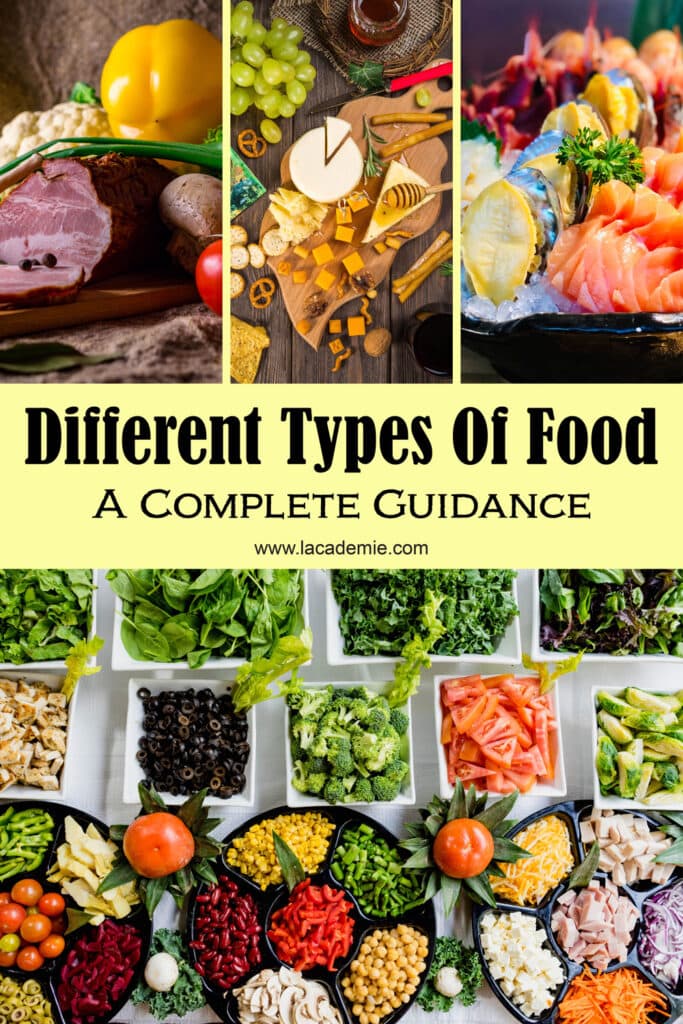


Truc Tran (Kris)
Senior Content Writer
Expertise
Home Cooking, Meal Planning, Recipe Development, Baking and Pastry, Food Editor, Cooking-video Maker, Asian Food Content Creator, Vietnamese Food Evaluation Expert
Education
TasTAFE, Australia
Kendall College (Australia Branch in Sydney)
HNAAu School (Vietnam, International Joint Training Program)
Kris, also known as Truc Tran, is a seasoned food writer and editor. She loves exploring all kinds of foods, from quick street foods to fancy restaurant dishes. In her writing, she brings together different tastes, cooking methods, and traditions of cuisines, showing how each culture’s food or drink is unique. On Fifteen.net, Kris shares her deep knowledge, especially about Asian food and traditional meals from across the globe.